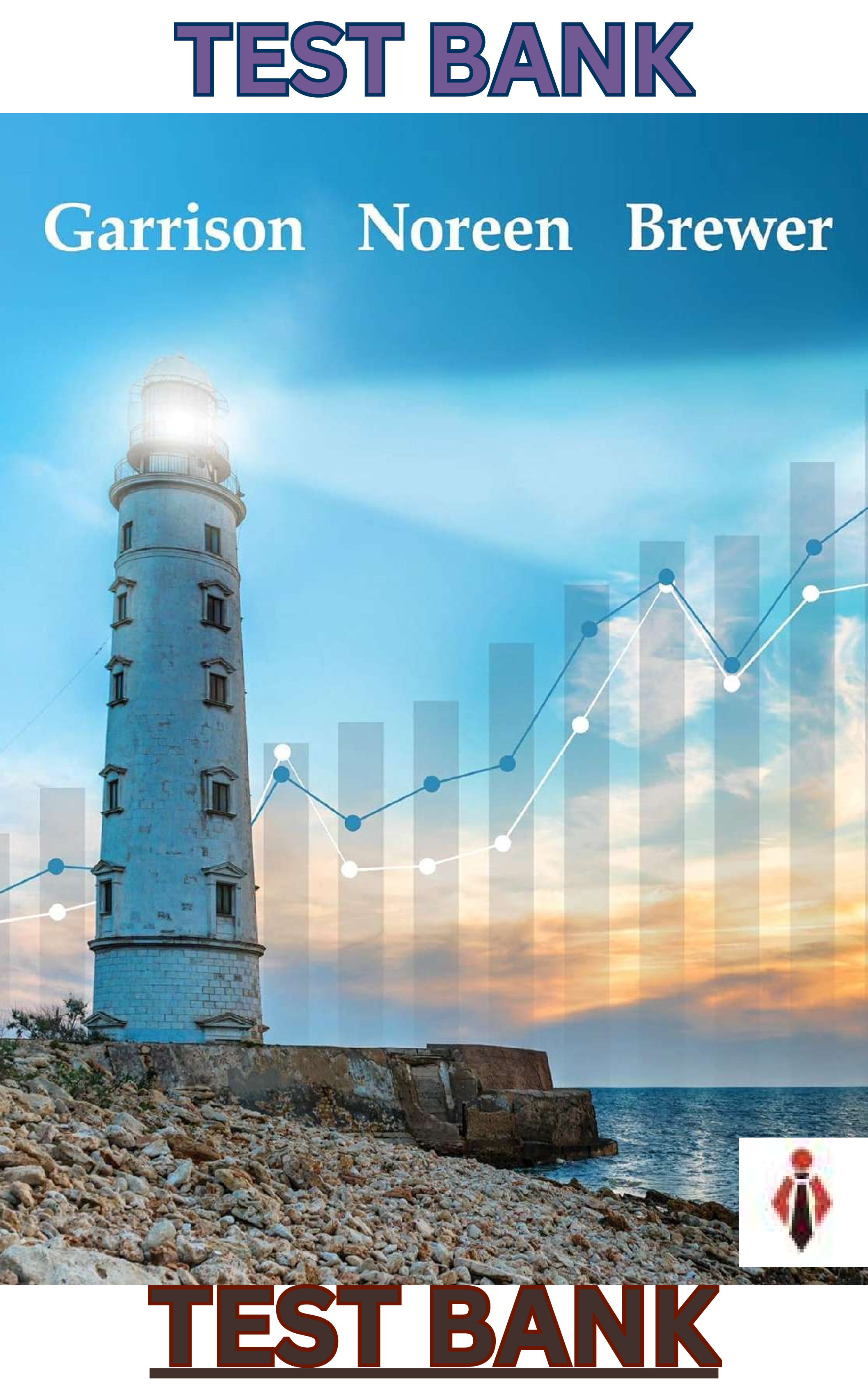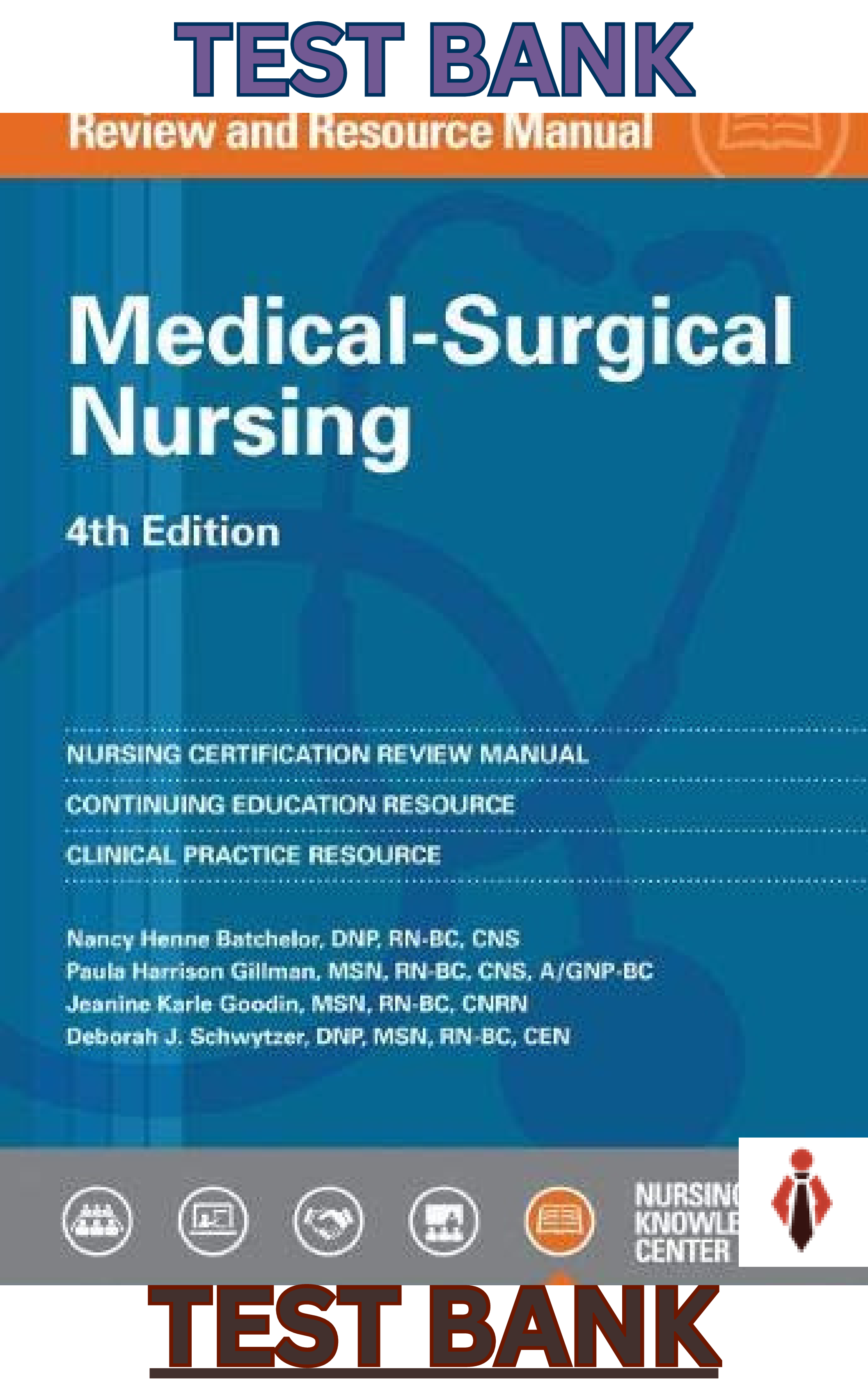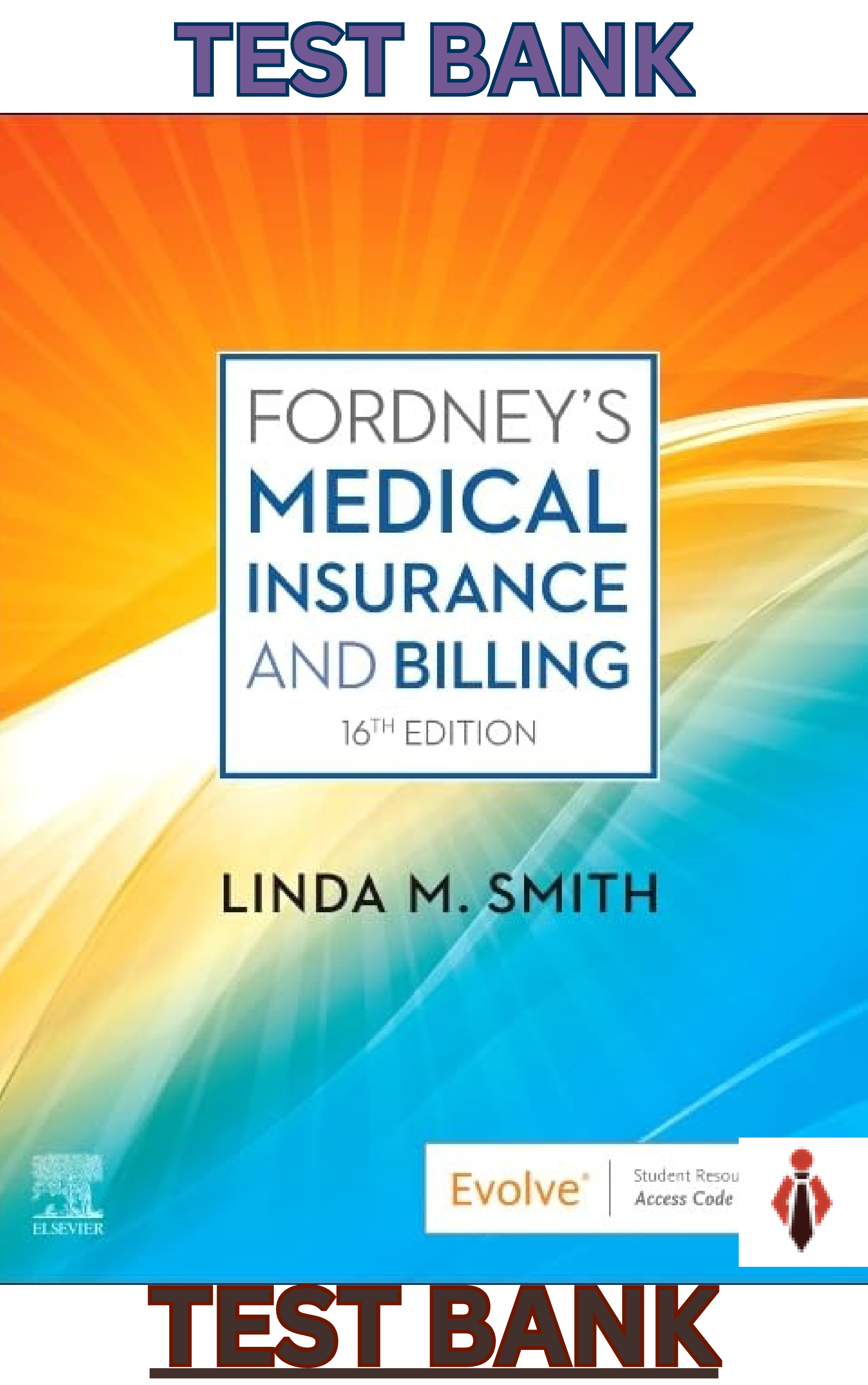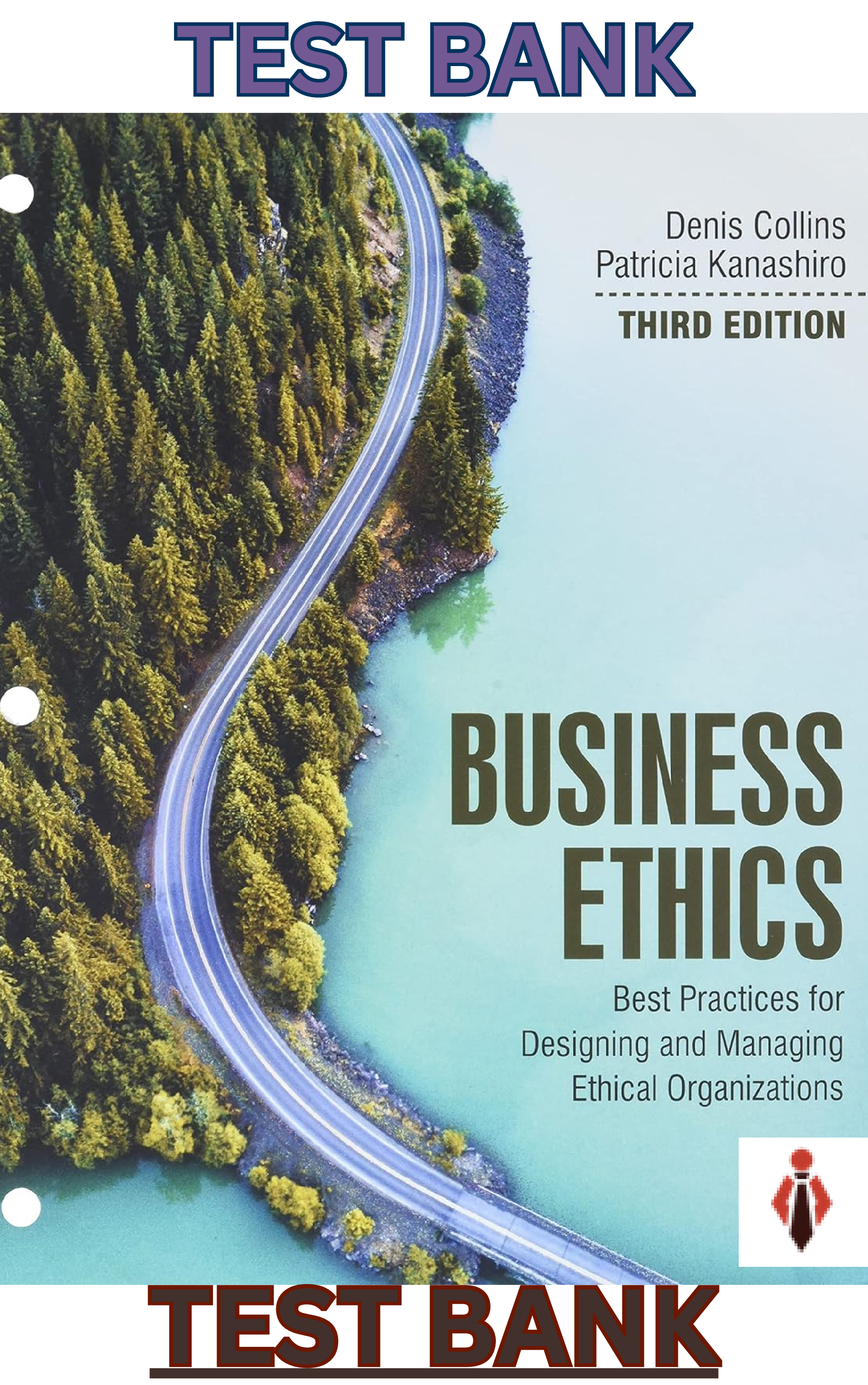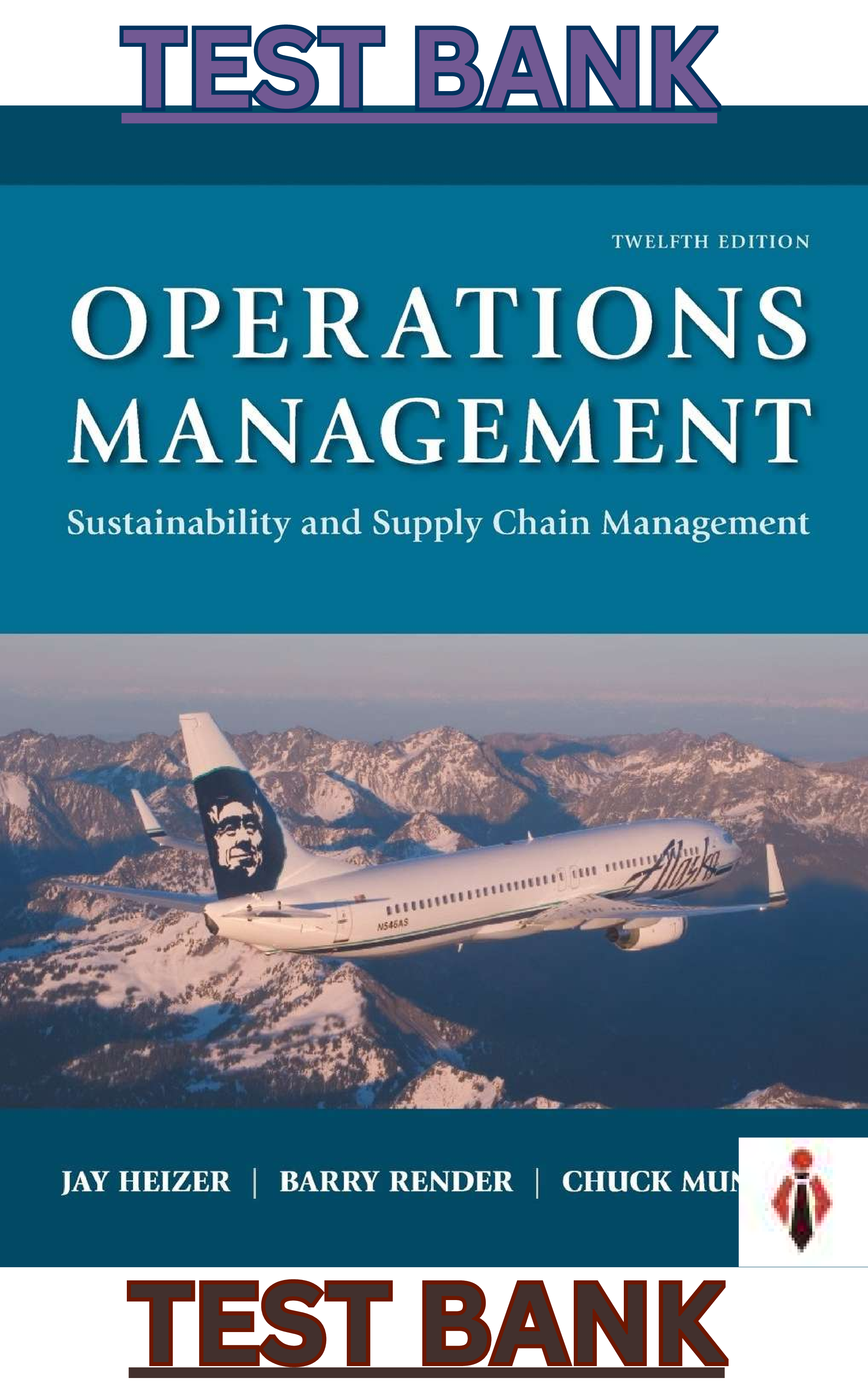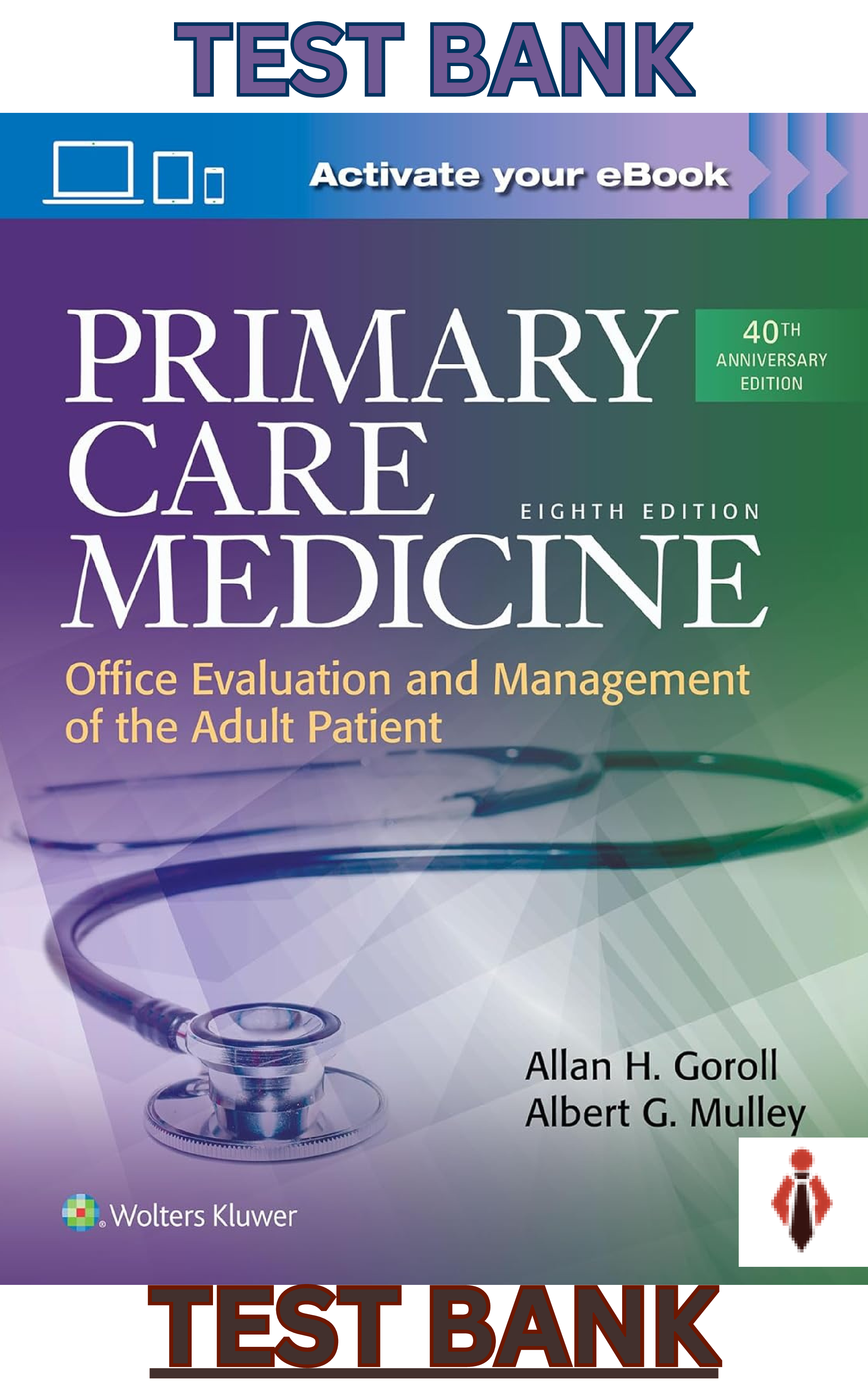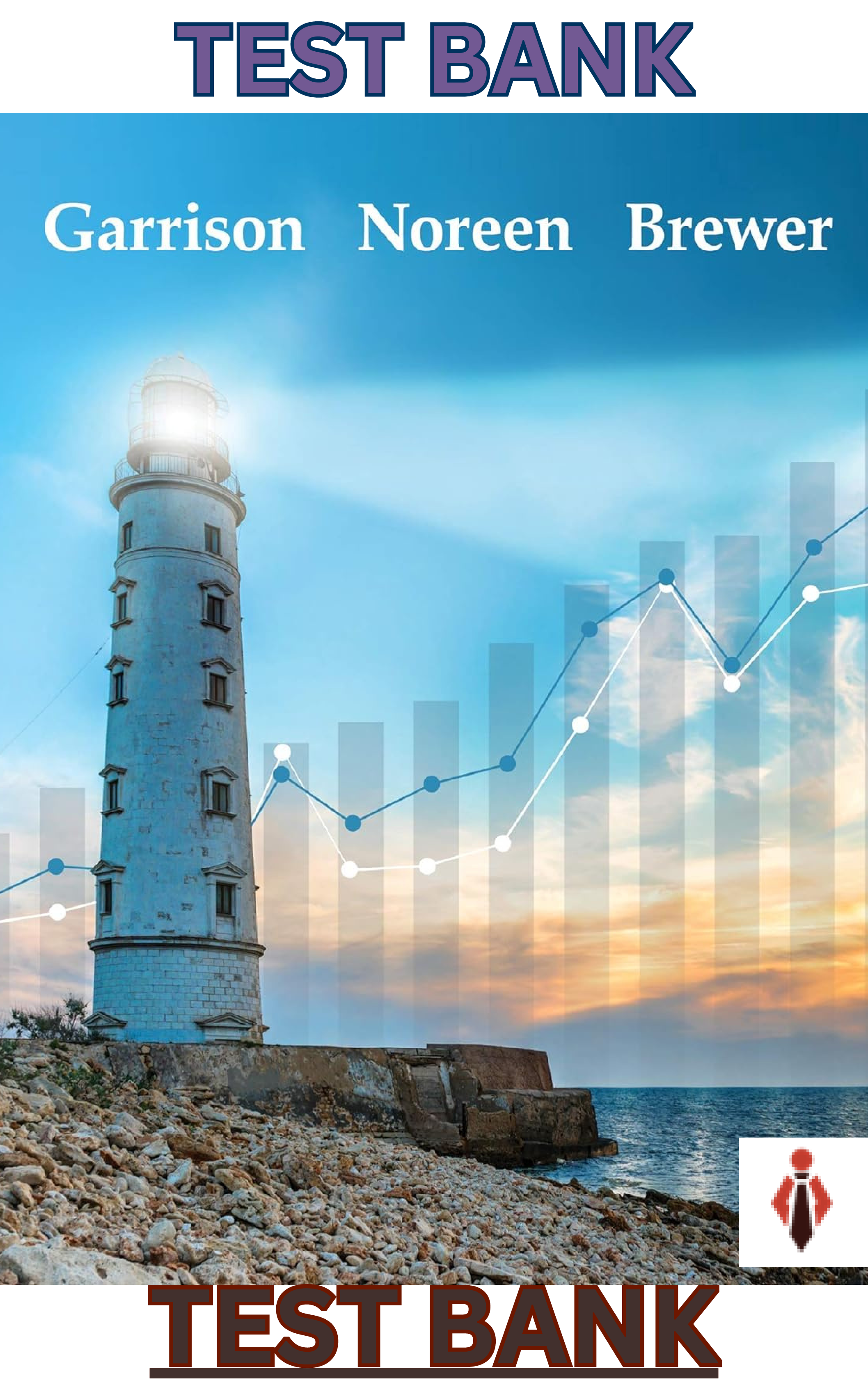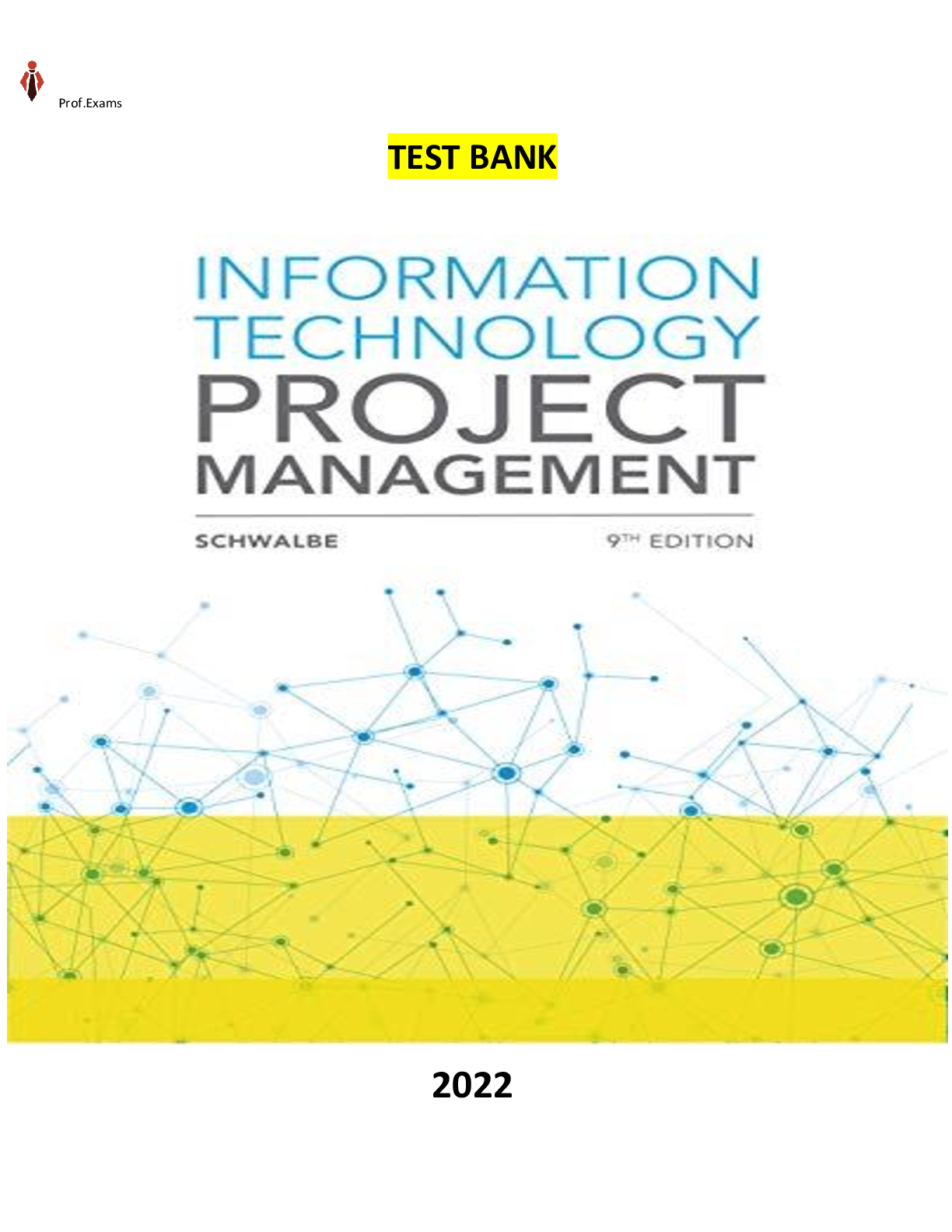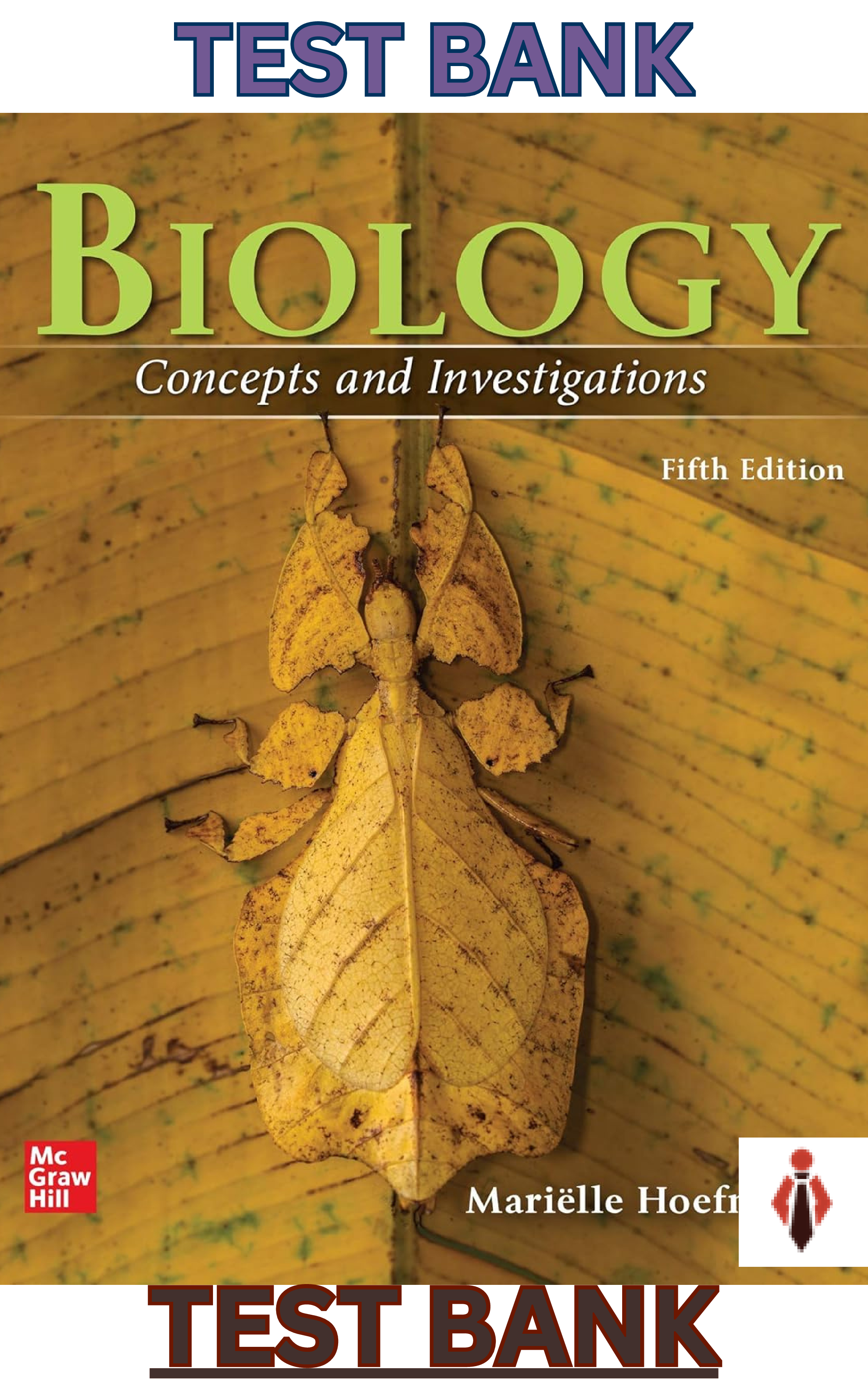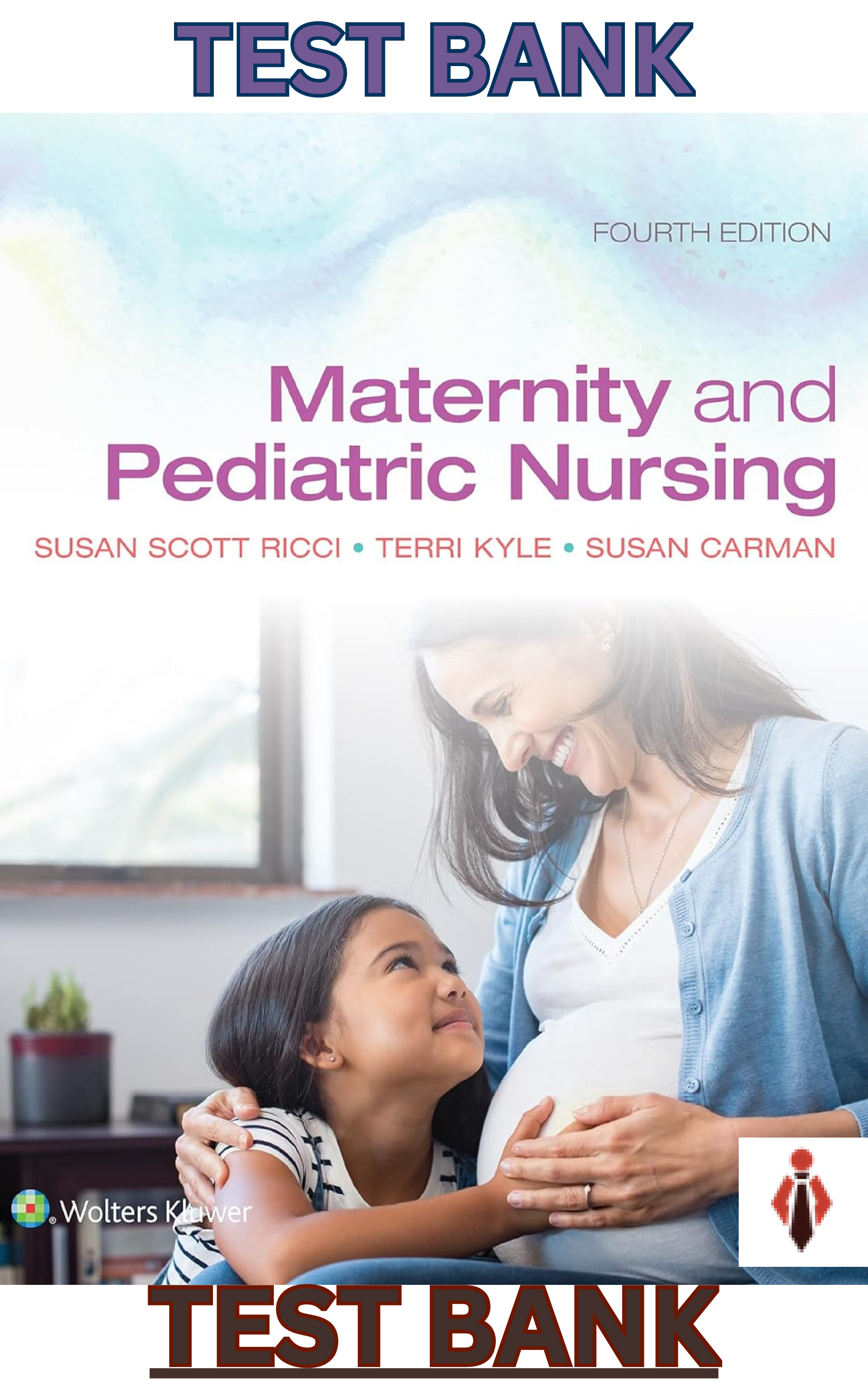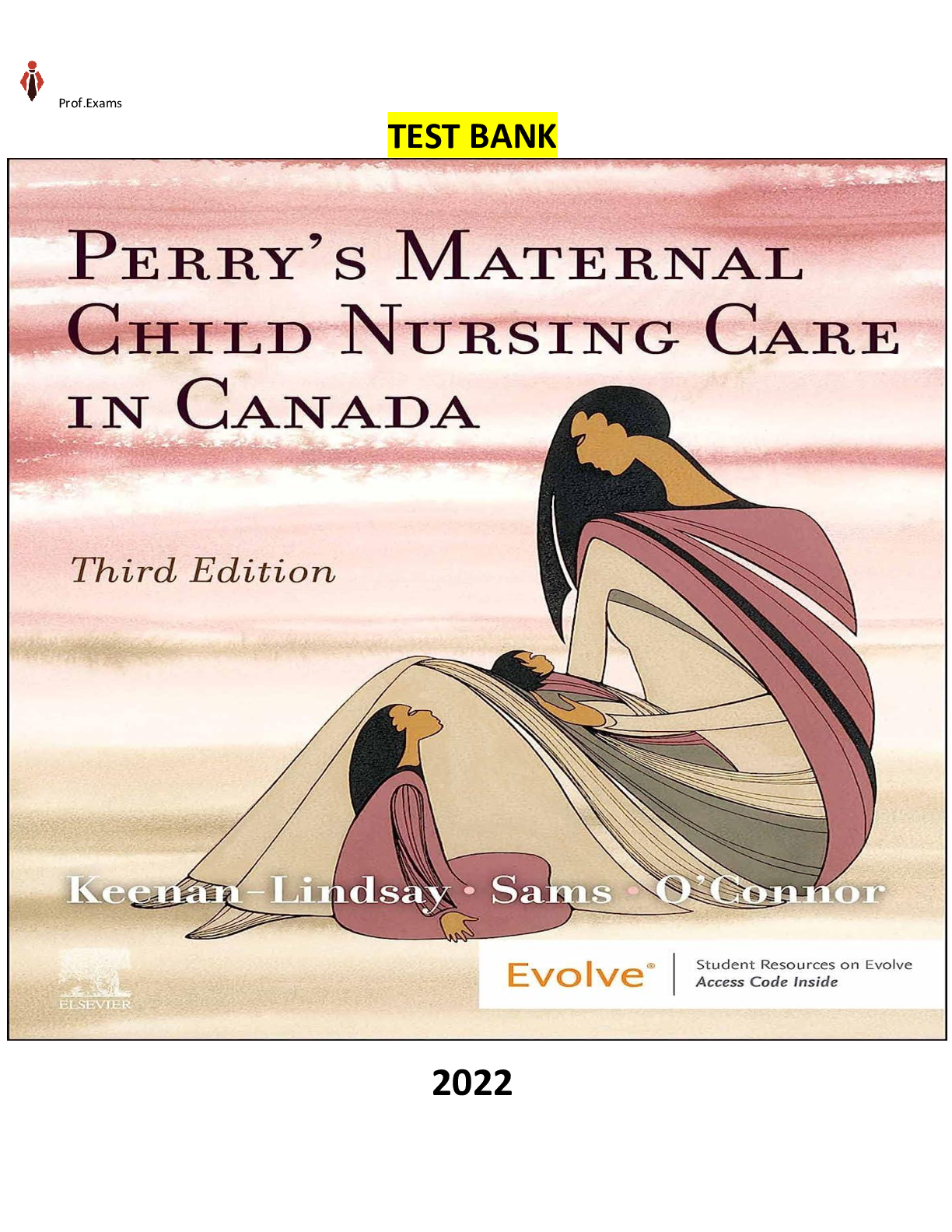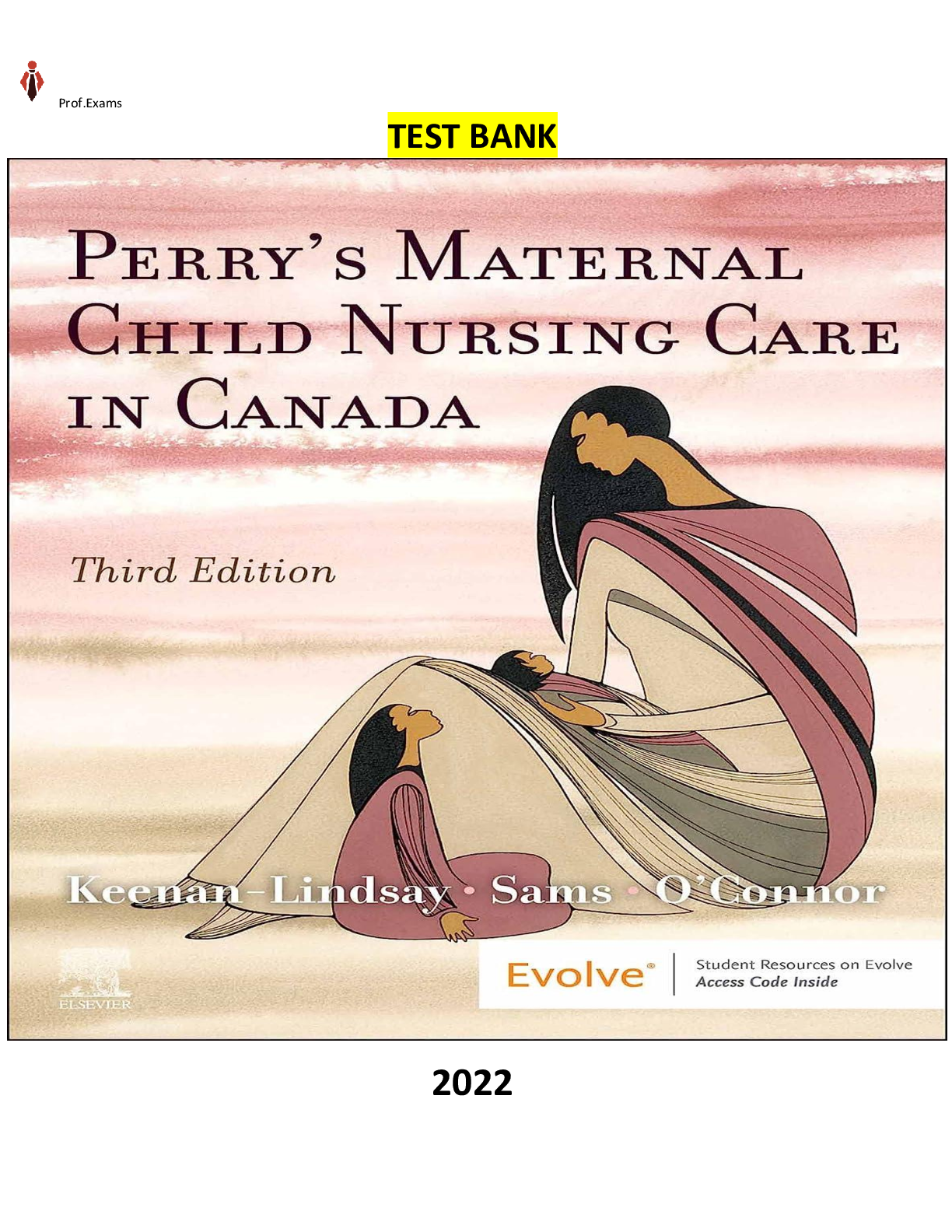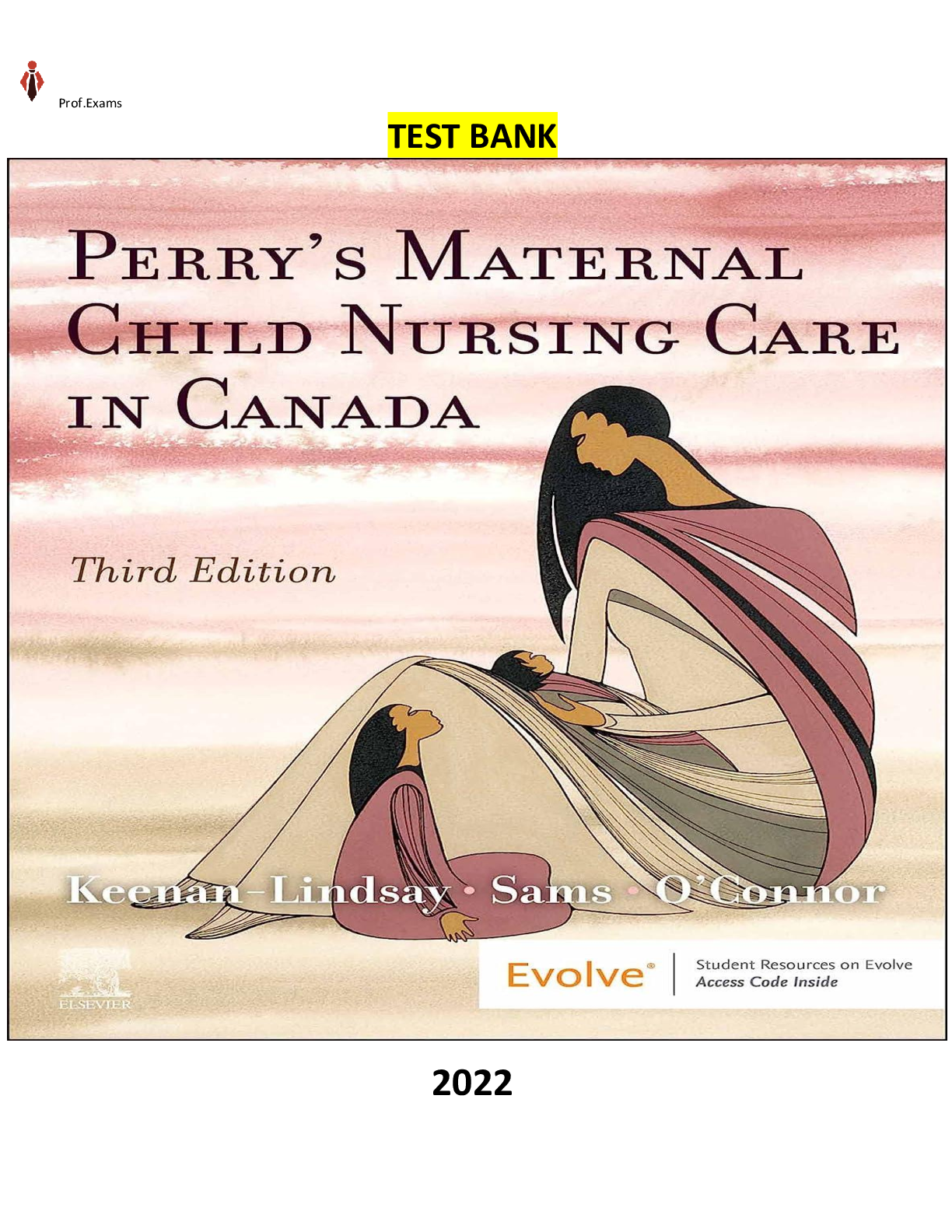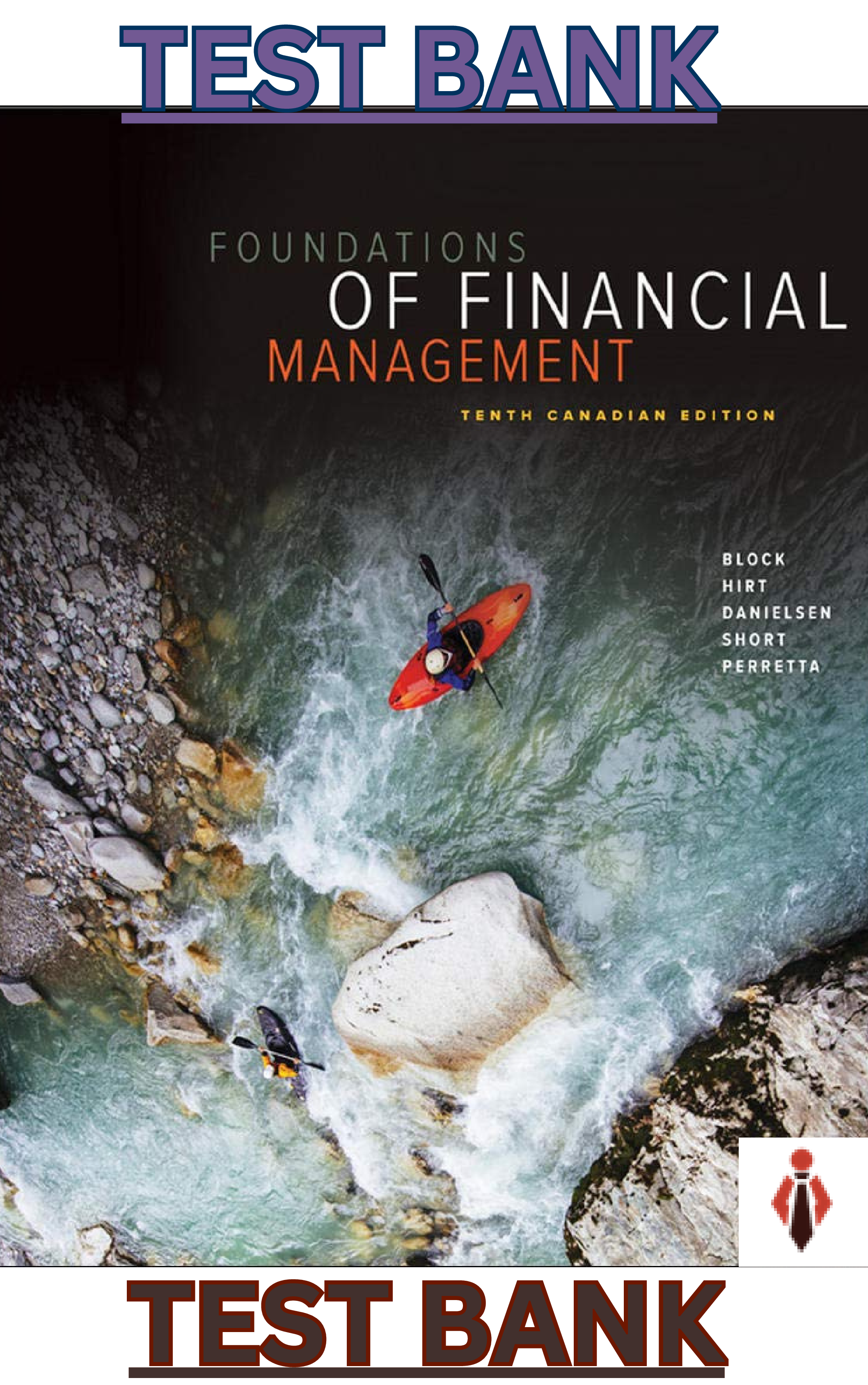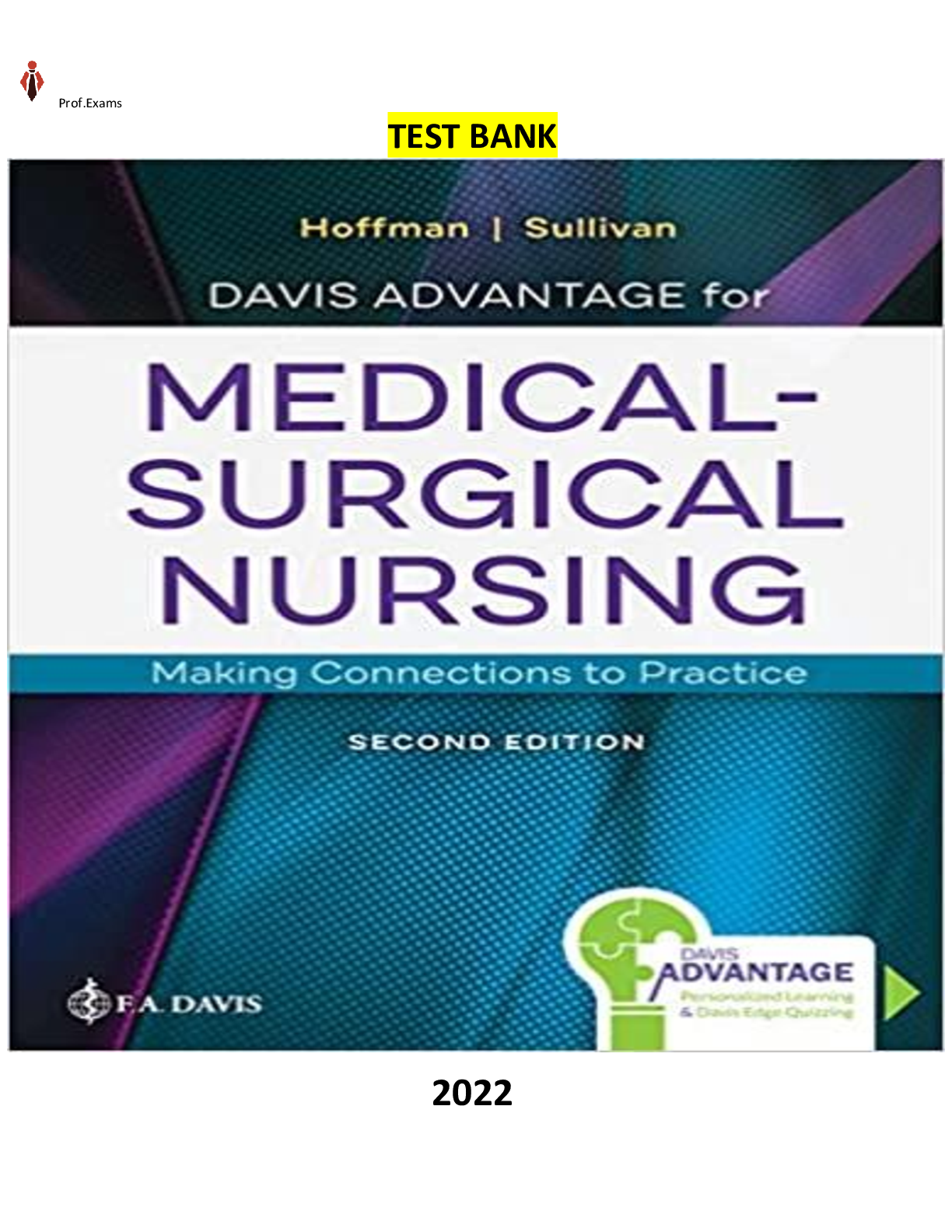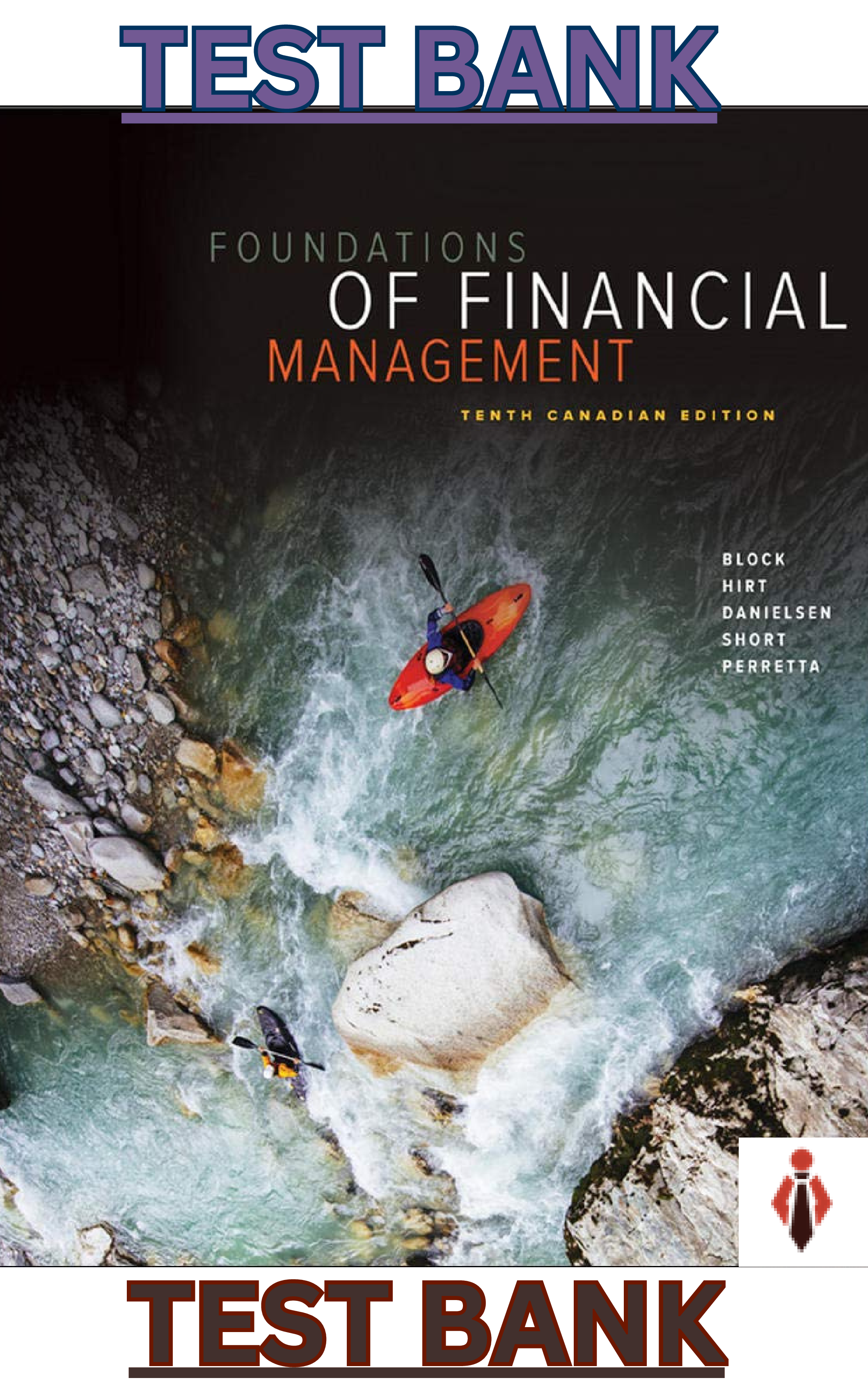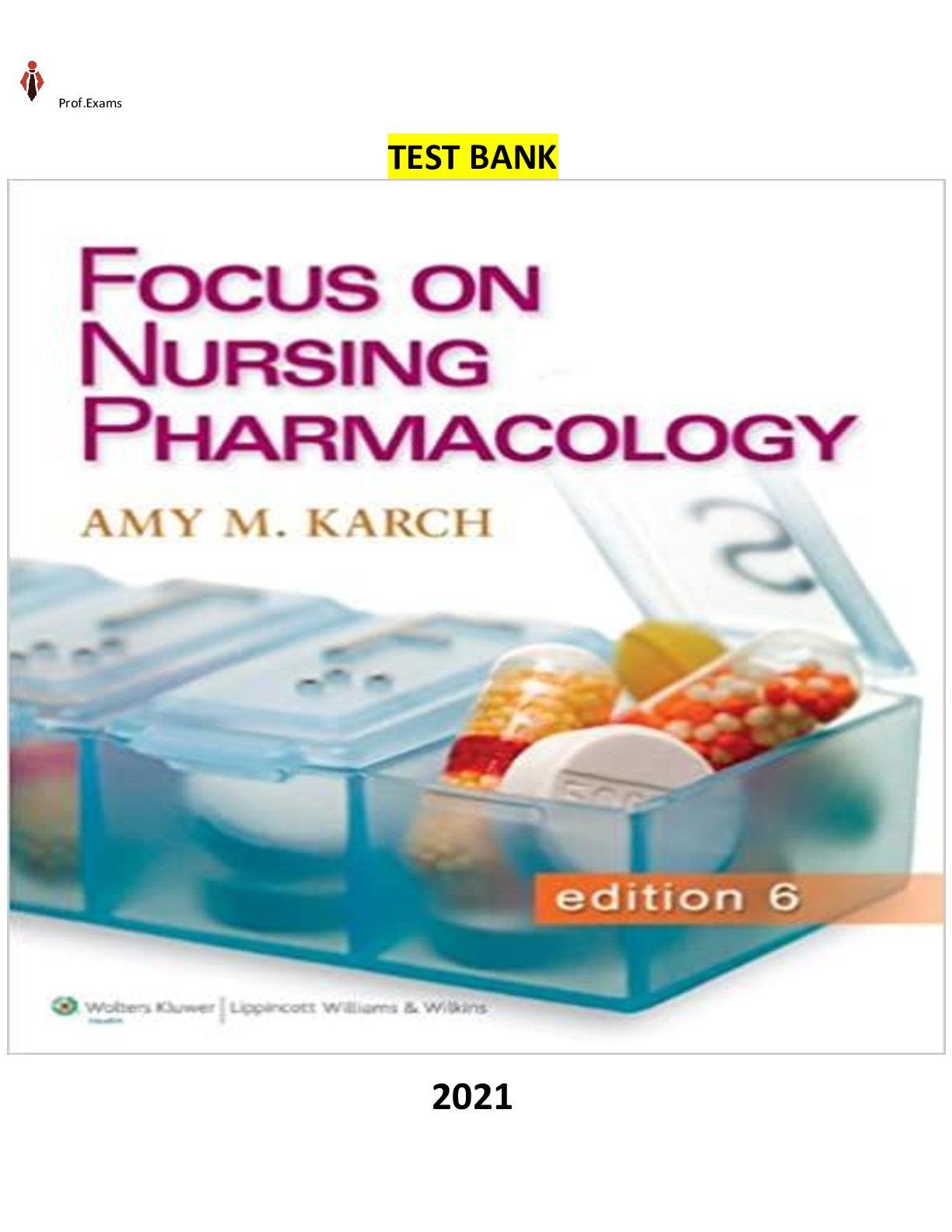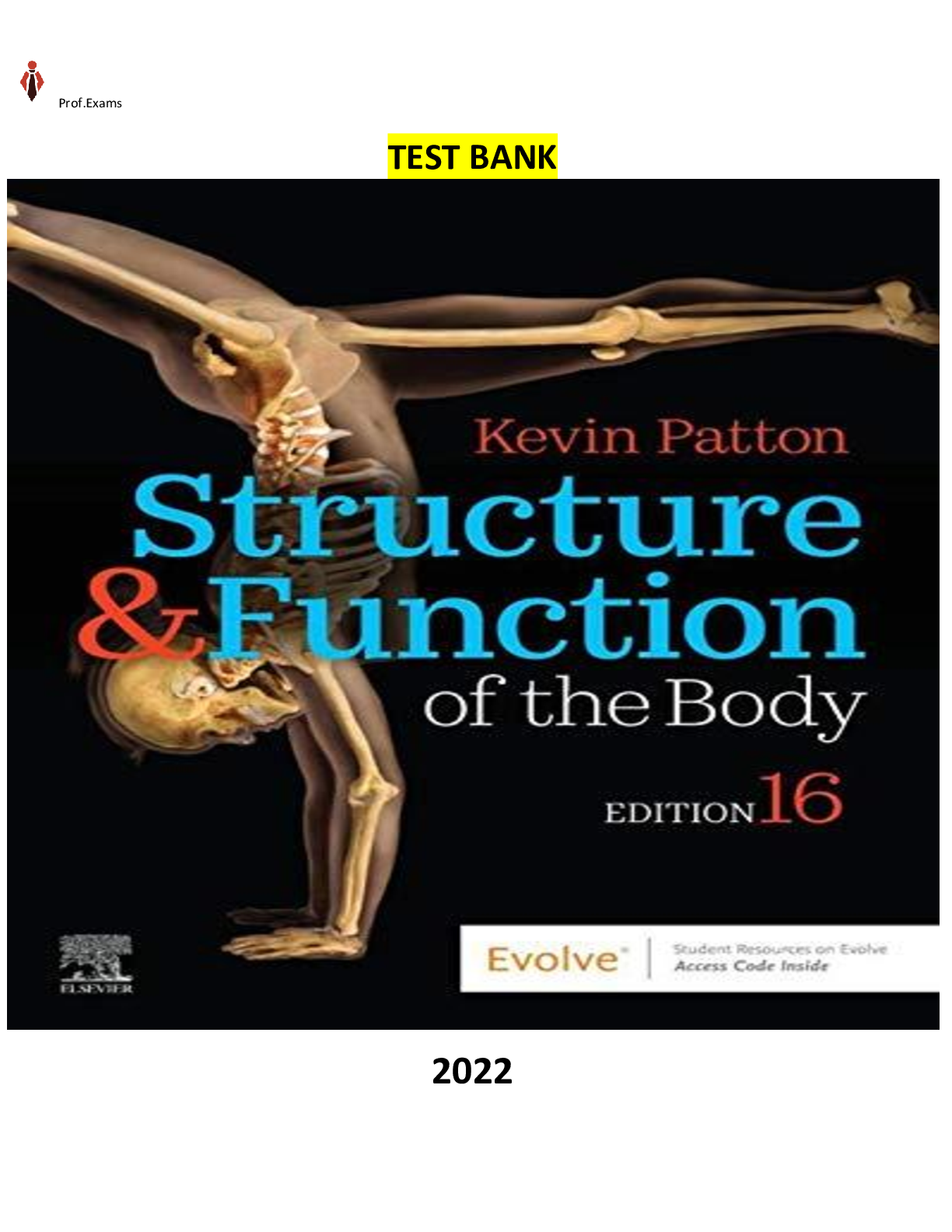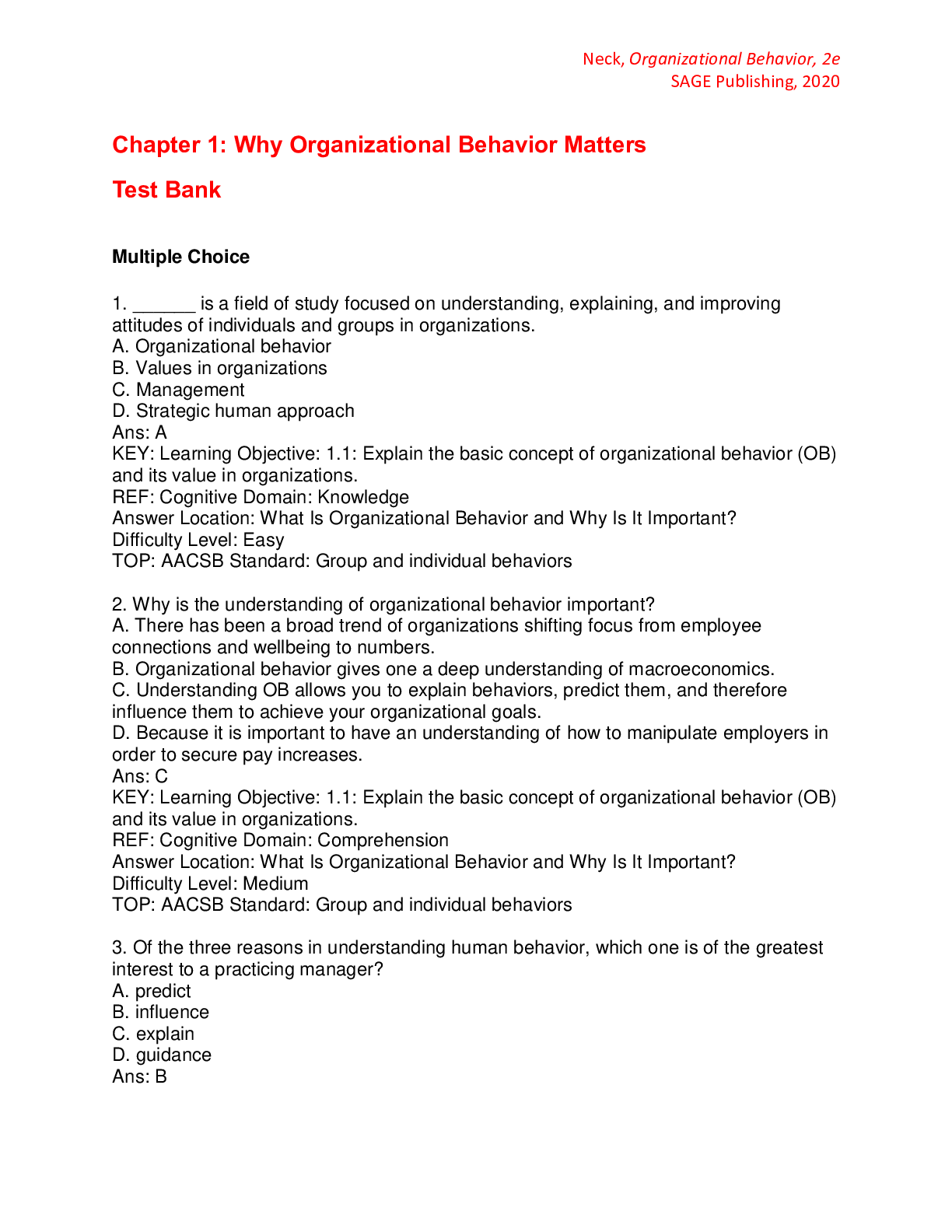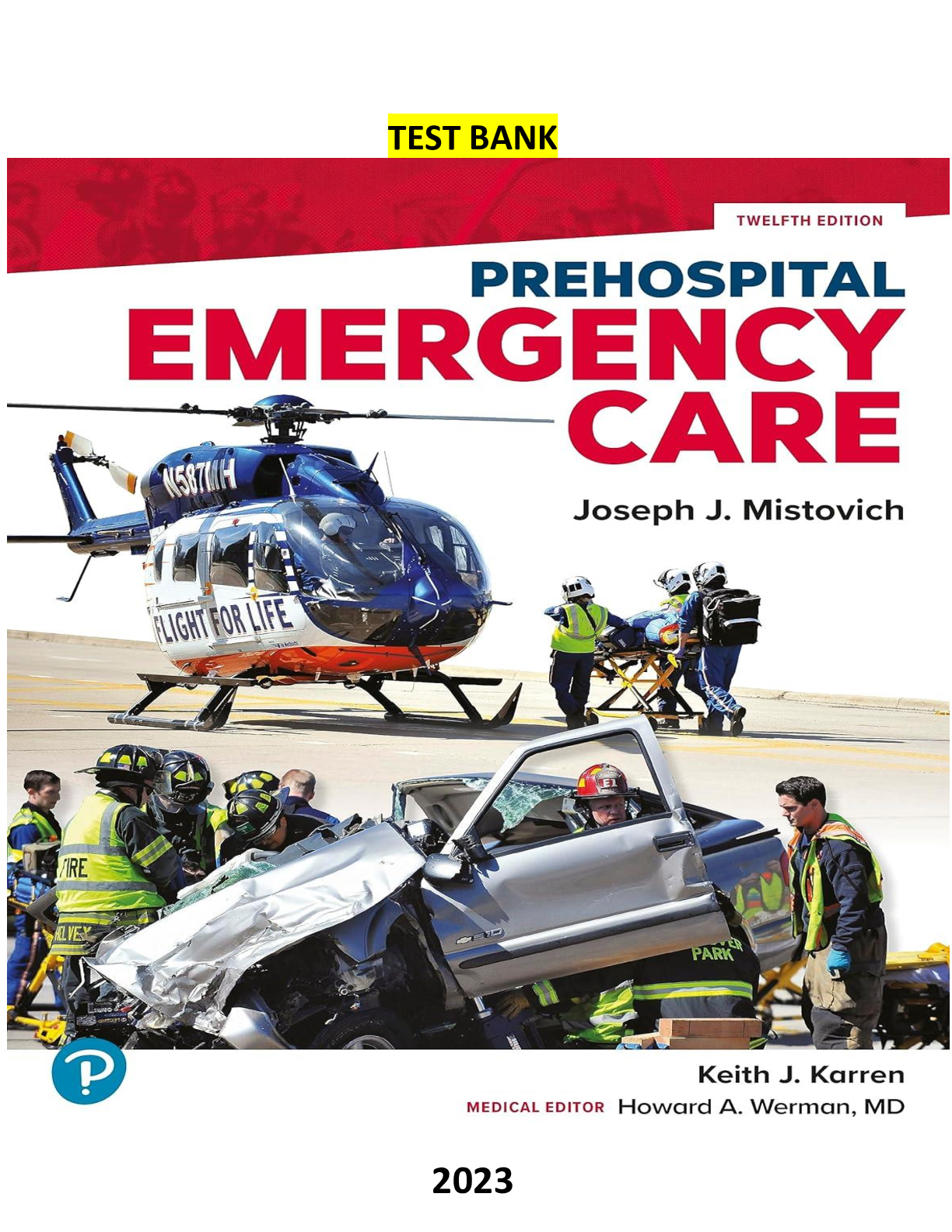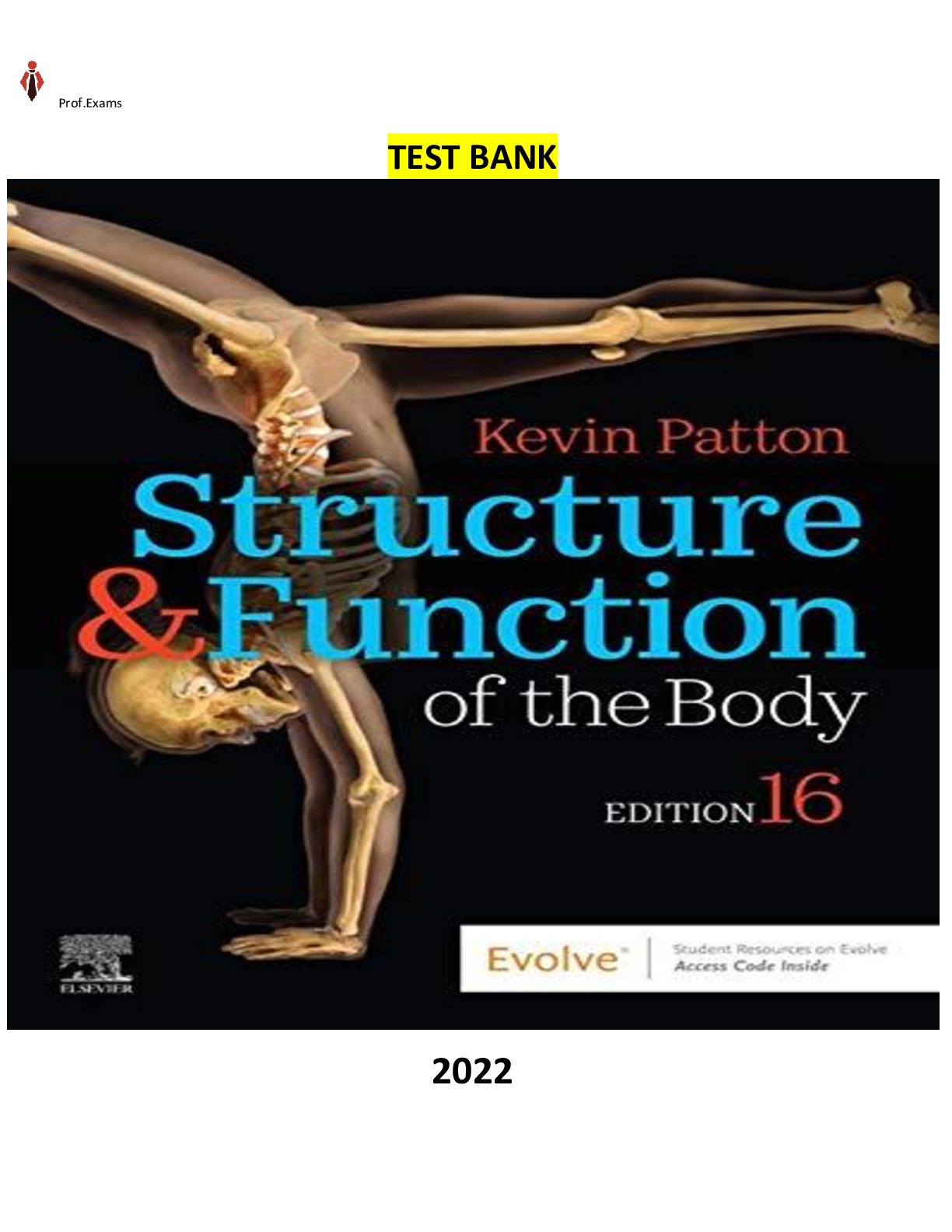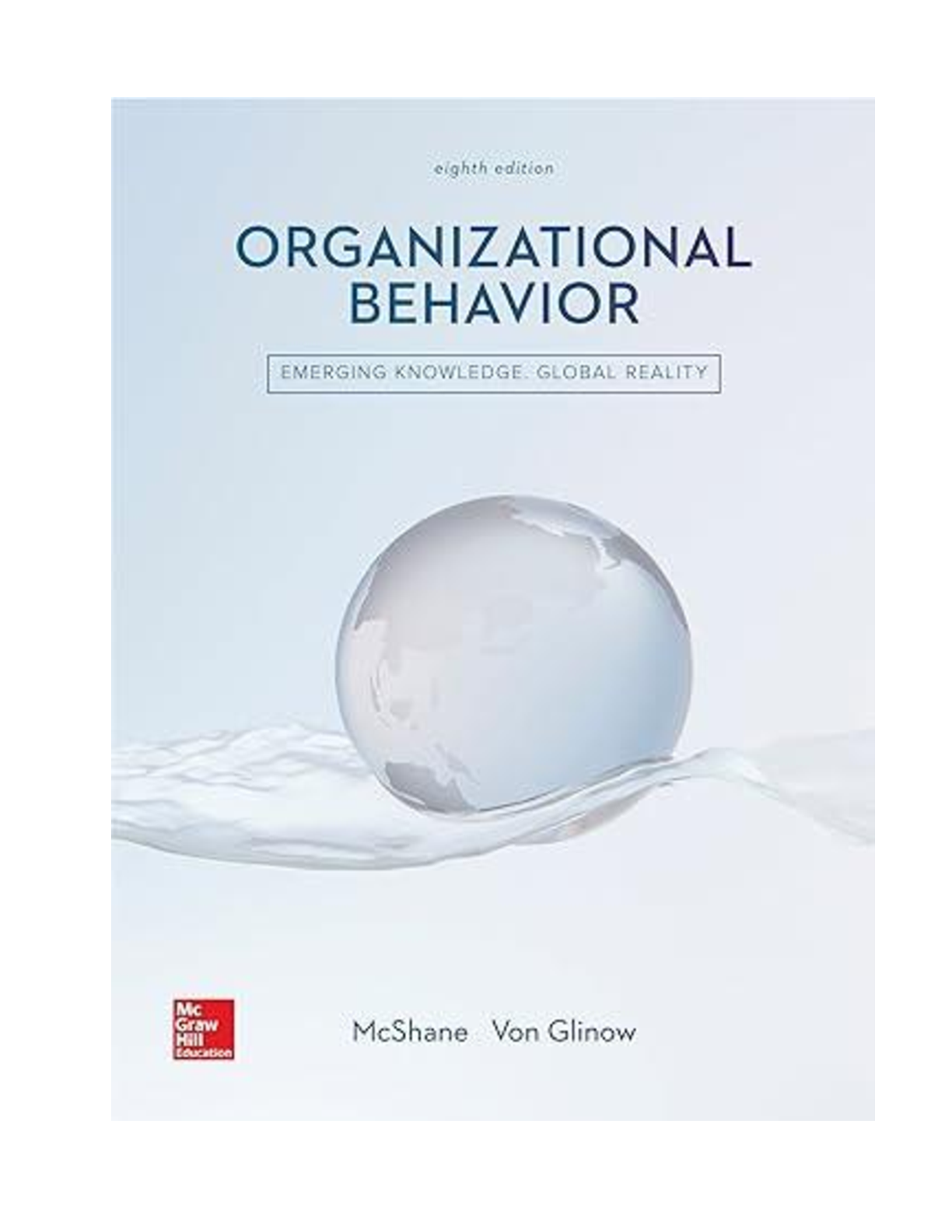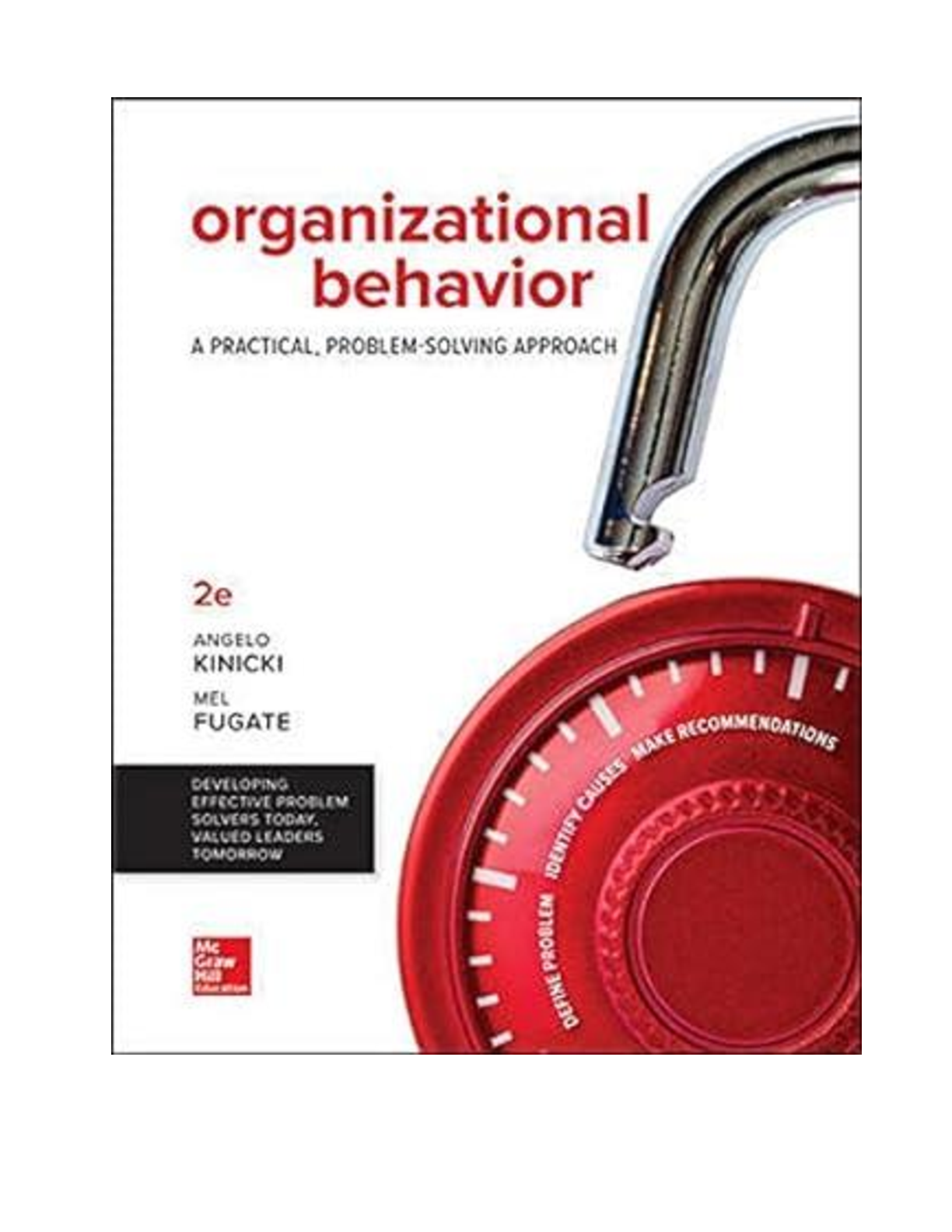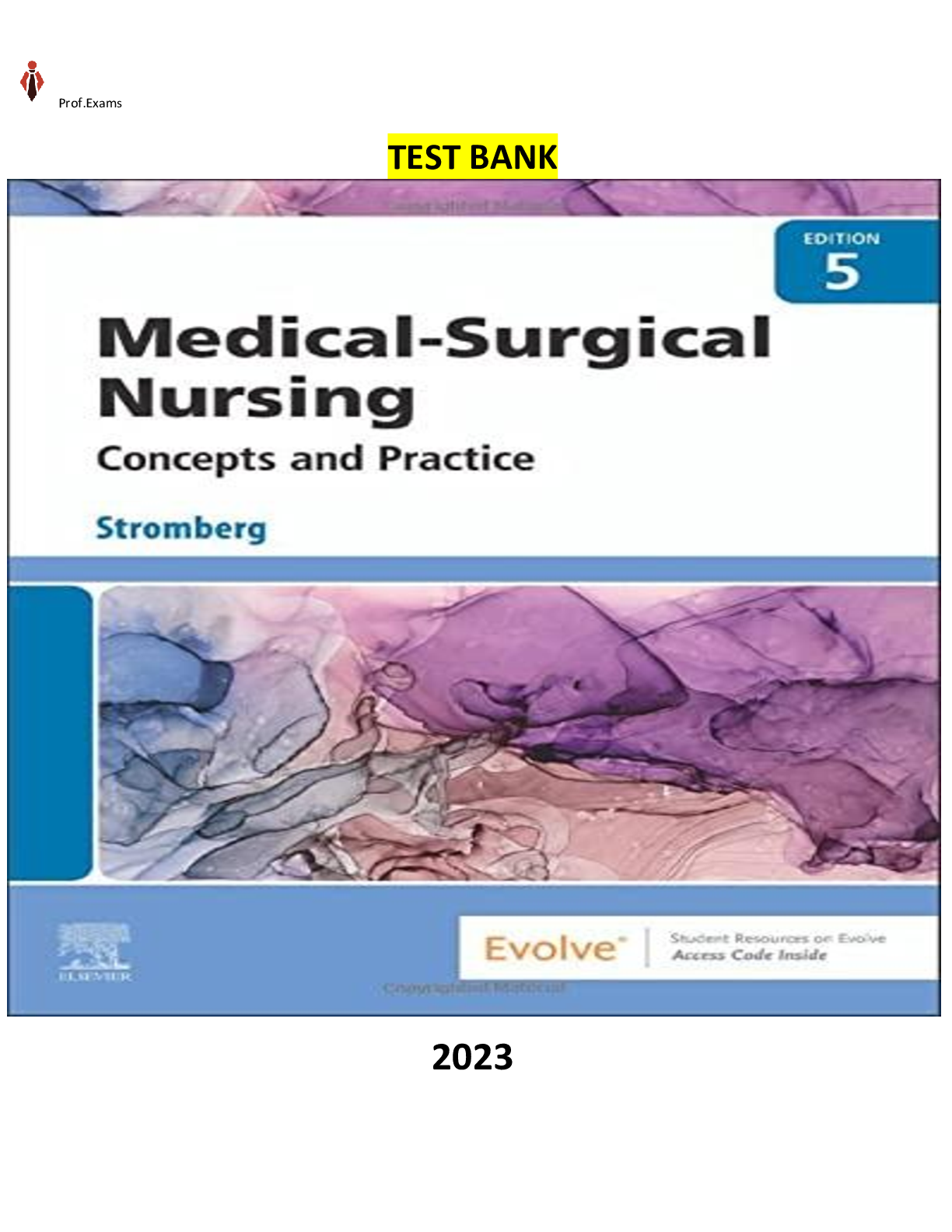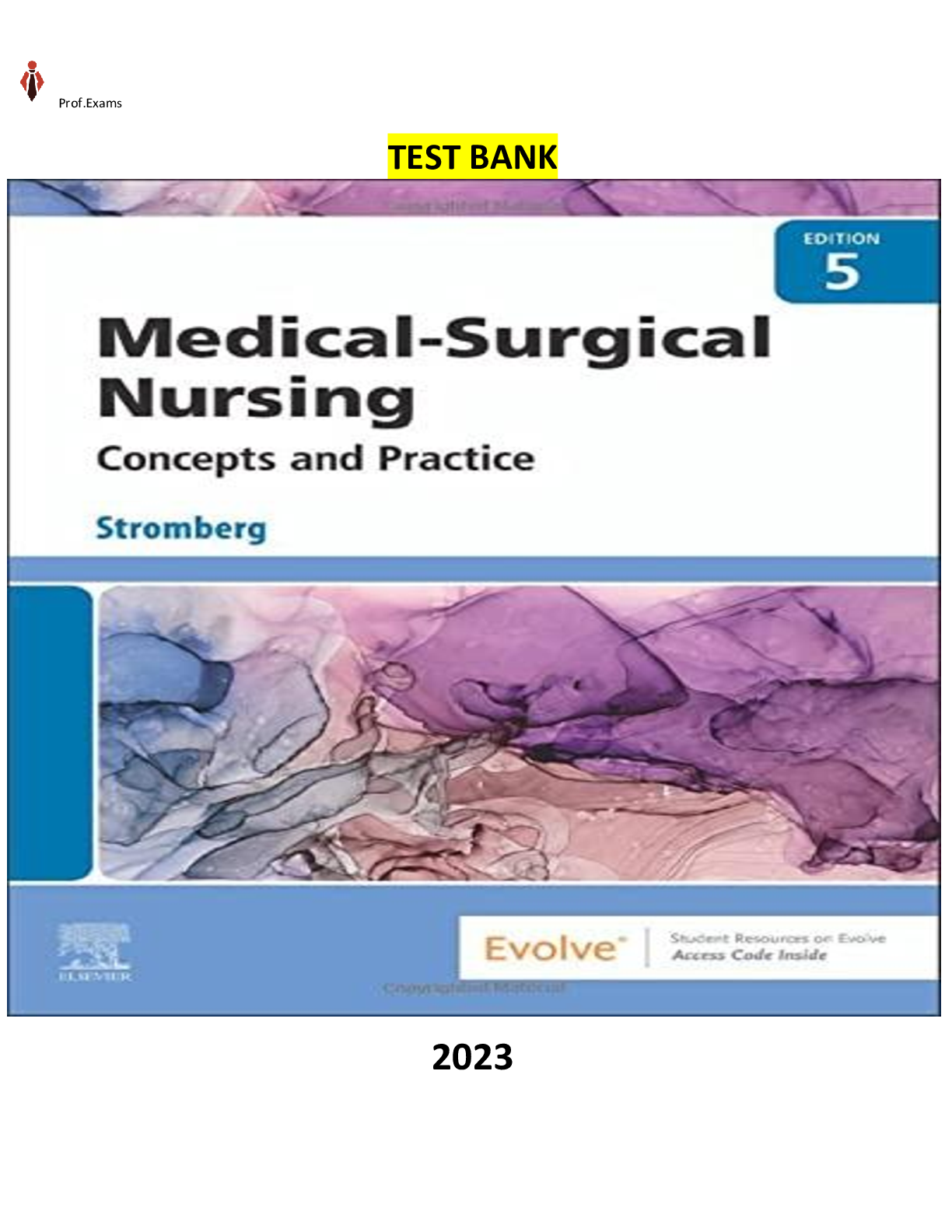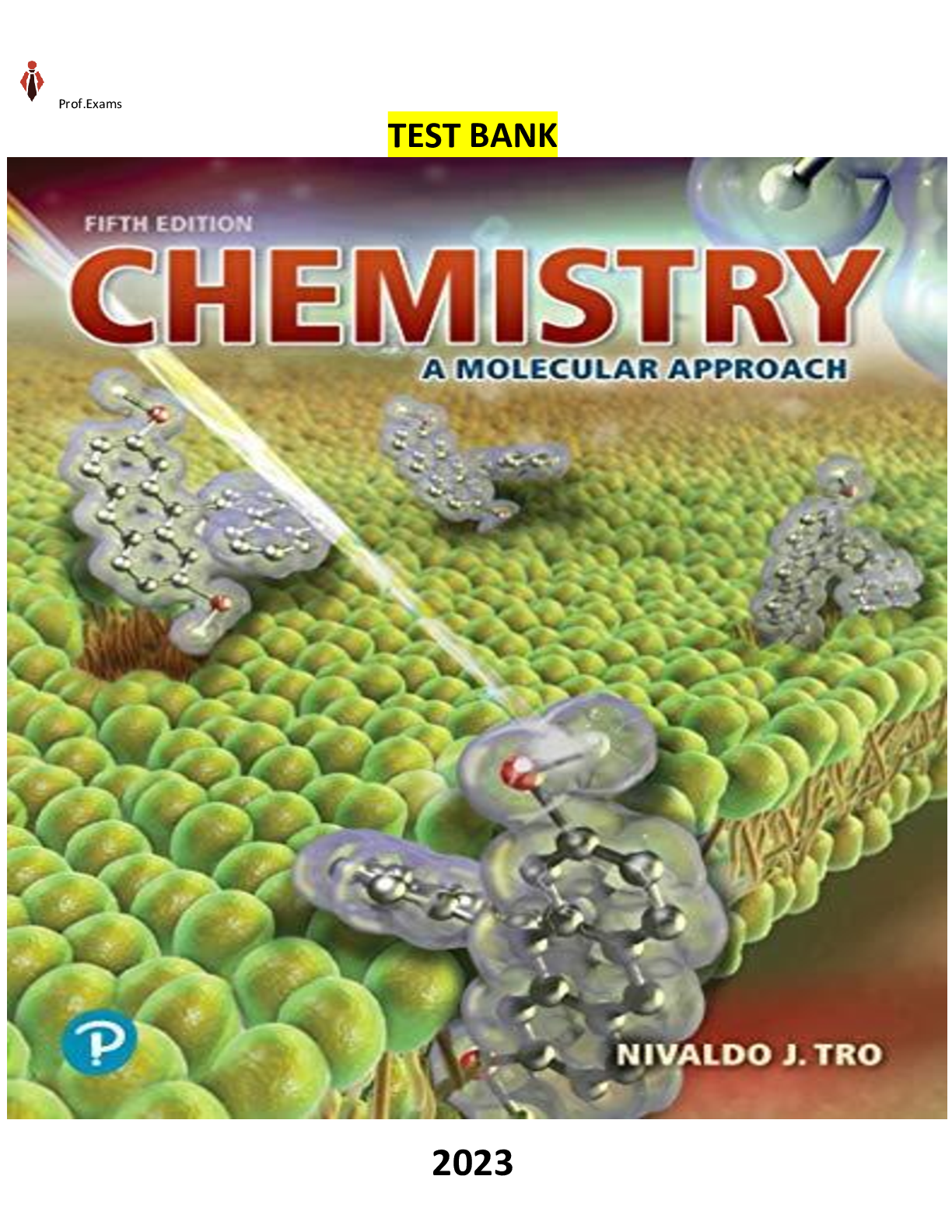Organizational Behavior > TEST BANK > COMPLETE - Elaborated Test Bank for Organizational Behavior Managing People and Organizations, 14Ed. (All)
COMPLETE - Elaborated Test Bank for Organizational Behavior Managing People and Organizations, 14Ed., Ricky W. Griffin & Jean M. Phillips. ALL Chapters included updated & Latest-2022
Document Content and Description Below
COMPLETE - Elaborated Test Bank for Organizational Behavior Managing People and Organizations, 14Ed., Ricky W. Griffin & Jean M. Phillips. ALL Chapters included updated & Latest-2022 COMPLETE - Elabo... rated Test Bank for Organizational Behavior Managing People and Organizations, 14Ed., Ricky W. Griffin & Jean M. Phillips. ALL Chapters included updated & Latest-2022 TABLE OF CONTENTS Part I: INTRODUCTION TO ORGANIZATIONAL BEHAVIOR. 1. An overview of organizational behavior. 2. The changing environment of organizations. Part II: INDIVIDUAL BEHAVIORS AND PROCESSES IN ORGANIZATIONS. 3. Individual characteristics. 4. Individual values, perceptions, and reactions. 5. Motivating behavior. 6. Motivating behavior with work and rewards. Part III: SOCIAL AND GROUP PROCESSES IN ORGANIZATIONS. 7. Groups and teams. 8. Decision making and problem solving. 9. Communication. 10. Conflict and negotiation. Part IV: LEADERSHIP AND INFLUENCE PROCESSES IN ORGANIZATIONS. 11. Traditional leadership approaches. 12. Modern leadership approaches. 13. Power, influence, and politics. Part V: ORGANIZATIONAL PROCESSES AND CHARACTERISTICS. 14. Organization structure and design. 15. Organization culture. 16. Change management. 1. By focusing on organizational behavior, businesses can potentially increase job satisfaction and decrease employee absenteeism and turnover. a. True b. False 2. When managers rely on a systems approach to organizations, they start by focusing on material, human, financial, and informational inputs. a. True b. False 3. Applying a universal perspective, managers try to identify all of the possible ways to solve problems, based on the elements of the situation. a. True b. False 4. The origins of organizational behavior date back to prehistoric times. a. True b. False 5. Human behavior in organizations is not impacted by the organizational environment. a. True b. False 6. A system is an interrelated set of elements that function as a whole. a. True b. False 7. Being first to market with a product can enable an organization to gain a competitive advantage. a. True b. False 8. Organizational behavior is a designated business function, just like marketing and accounting. a. True b. False 9. Managers use their interpersonal skills to understand cause-and-effect relationships. a. True b. False 10. Productivity and performance are individual-level behaviors that impact organizational effectiveness. a. True b. False 11. Interactionalism suggests individuals and situations interact continuously to determine individuals’ behavior. a. True b. False 12. An organizational system receives a variety of inputs from the environment, combines and transforms them, and then returns them to the environment. a. True b. False 13. Leading is the process of setting deadlines and making plans to achieve corporate goals. a. True b. False 14. Organizing is the process of designing jobs, grouping jobs into units, and establishing patterns of authority among jobs and groups of jobs. a. True b. False 15. Organizational behavior principles emphasize that since individuals work in isolation, they are not integral to a business’s success or failure. a. True b. False 16. If an organization uses a systems approach, it relies on technology such as manufacturing, operations, and service processes to transform inputs into outputs. a. True b. False 17. If an organization develops corporate goals to acquire new businesses, the task would be part of the organization’s planning function. a. True b. False 18. Providing the best customer support before, during, and after a sale can create goodwill with customers, but it is not likely to give organizations a competitive advantage. a. True b. False 19. A manager with strong conceptual skills has the ability to think in the abstract. a. True b. False 20. Organizational behavior is the study of human behavior in organizational settings, the interface between human behavior and the organization, and the organization itself. a. True b. False 21. The universal approach to organizational behavior suggests that elements of the situation should be evaluated to determine the best way to respond. a. True b. False 22. Organizational citizenship refers to the behavior of individuals that makes a positive overall contribution to the organization. a. True b. False 23. The controlling function involves monitoring and correcting the actions of the organization and its members to keep them directed toward their goals. a. True b. False Indicate the answer choice that best completes the statement or answers the question. 24. Planning is the process of a. designing jobs, grouping jobs into units, and establishing patterns of authority between jobs and units. b. determining the organization’s desired future position and deciding the best way to achieve the desired outcome. c. motivating the organization’s members to work together toward the organization’s goals. d. monitoring and correcting the actions of the organization and its members to keep them directed toward their goals. e. utilizing organizational resources with the ultimate goal of attaining organizational goals efficiently and effectively. 25. A manager fulfills the primary role of a leader by a. choosing the best resources to most effectively and efficiently produce the organization’s product or service. b. verifying the quality of resources that pass through the organization. c. determining how organizational resources will be released in the environment. d. encouraging workers to increase productivity. e. identifying the various suppliers the organization will utilize to acquire resources. 26. A is a collection of verbal and symbolic assertions that specify how and why two or more variables are related, and the conditions under which they should and should not relate. a. hypothesis b. theory c. data set d. fact e. statistic 27. Which of the following strategies focuses on company expansion, either organically or through acquisitions? a. Differentiation b. Cost leadership c. Specialization d. Growth e. Domination 28. By focusing on organizational behavior, a business seeks to understand how a. organizational systems shape employee behavior. b. organizational structures shape employee behavior. c. organizational processes shape employee behavior. d. organizational decisions shape employee behavior. e. All of these are correct. 29. A researcher studying the relationship between age and diversity awareness finds a negative correlation. What do the researcher’s results suggest? a. As age increases, diversity awareness increases. b. As age decreases, diversity awareness decreases. c. As age increases, diversity awareness decreases. d. A person's age doesn't affect his or her level of diversity awareness. e. The study was inconclusive. 30. Businesses that use a strategy focus on a narrow market segment or niche. a. cost leadership b. differentiation c. specialization d. growth e. psychological 31. Following a systems approach, the profit Walmart receives from its services is identified as a type of a. technology. b. output. c. input. d. transformation. e. contingency. 32. Which of the following is NOT a facet of human resource management? a. Developing incentives to motivate employees b. Developing plans to use fewer employees c. Creating programs to develop employees’ skills d. Developing incentives to retain employees e. Attracting high-quality employees 33. The systems approach is beneficial to managers because it a. underscores the importance of the organization's environment. b. provides a set of procedures to make decisions. c. enables them to eliminate interactions among various elements of the organization. d. reduces the risk of human error. e. shifts the focus from outside the company to inside the company. 34. After World War I, organizations shifted their attention away from scientific management to understanding the role of _ . a. managerial corruption b. law and politics c. gender and sexual harassment d. religion and spirituality e. human factors and psychology 35. is a statistical technique used to combine the results of many different research studies conducted in a variety of organizations and for a variety of jobs. a. Standard deviation b. Path analysis c. Analysis of variance d. Regression e. Meta-analysis 36. Organizations pursuing a strategy of keeping costs and prices low usually try to develop a competitive advantage using which of the following? a. Operational excellence b. Differentiation c. Cost analysis d. Employee training e. Product innovation 37. An understanding of organizational behavior (OB) is likely to help organizations prevent all of the following EXCEPT a. unhappy employees. b. weak leadership. c. lack of direction. d. stagnating profits. e. loss of market share. 38. A manager who groups jobs into units is performing which of the following functions of management? a. Planning b. Organizing c. Controlling d. Supervising e. Leading 39. A researcher hypothesizes that the age of employees influences their awareness of diversity. In this example, age is the __________ and diversity awareness is the _. a. factor, control b. theory, correlation c. correlation, theory d. independent variable, dependent variable e. dependent variable, independent variable 40. Maximizing the efficiency of the manufacturing or product development process in order to minimize costs is referred to as a. managerial skill. b. business superiority. c. operational excellence. d. maintenance strategy. e. differentiation. 41. What is the total statistical correlation range? a. 0 to 10 b. 1 to 10 c. 0 to 100 d. –10 to 10 e. –1 to 1 42. Organizational behavior can best be described as a. simple. b. complex. c. confusing. d. insignificant. e. effortless. 43. Deming’s cycle of continuous improvement identifies fourteen principles that make any organization efficient and capable of solving problems. a. plan-do-check-act b. check-research-study-do c. act-interpret-evaluate-plan d. do-understand-analyze-plan e. research-analyze-evaluate-understand 44. Which perspective argues there’s “one best way” to solve a problem in any organization? a. The universal perspective b. Behavioral organization theory c. The systems perspective d. The interactional perspective e. The contingency perspective 45. Successful business strategies enable organizations to create and maintain a competitive advantage that is a. inflexible. b. sustainable. c. volatile. d. intangible. e. All of these are correct. 46. Investing in developing organizational behavior (OB) skills will do all of the following EXCEPT a. prepare one to be a more effective employee. b. prepare one to be a more effective manager. c. prepare one to be a more effective leader. d. help one move up faster in any organization. e. help one improve technical skills. 47. Which of the following questions could NOT be answered as a result of organizational behavior research findings? a. What goal level will best motivate my employees? b. How important is employee satisfaction to job performance? c. Should I seek a promotion with a competing firm? d. Is stress always bad? e. When are different leadership approaches most effective? 48. The variable in an experiment is the criterion, which researchers expect is affected by another factor. a. dependent b. independent c. codependent d. interdependent e. control 49. The effect occurs when people improve an aspect of their behavior or performance because they are aware they are being assessed. a. Hamilton b. Henricks c. Hawthorne d. Hampton e. Hoover 50. When organizations focus on the “softer” side of business, including organizational behavior factors, it can lead to a. weaker leadership. b. loss of trust among employees. c. better relationships with vendors. d. more motivated and more engaged employees. e. less motivated and less engaged employees. 51. Which of the following is used to measure potentially dysfunctional behavior in an organization? a. Absenteeism b. Job satisfaction c. Job dissatisfaction d. Organizational commitment e. Employee engagement 52. Firms that apply a strategy strive to be the lowest cost producer in the industry for a particular level of product quality. a. cost leadership b. differentiation c. specialization d. growth e. self-sabotaging 53. What is the term for a written prediction specifying expected relationships between certain variables? a. Hypothesis b. Theory c. Prophecy d. Correlation e. Statistic 54. Which of the following are outcome variables in organizations? Select all that apply. a. Individual-level behaviors b. Group-level behaviors c. Team-level behaviors d. Surface-level behaviors e. None of these are correct 55. To gain a competitive advantage, a company must offer a. the fewest product options. b. the most product options. c. the lowest prices. d. superior value for the price. e. superior customer service. 56. suggests individuals and situations interact continuously to determine individuals’ behavior. a. Interactionalism b. Contextualism c. Universalism d. Individualism e. Systems theory 57. A reflects the size and strength of the statistical relationship between two variables. a. correlation b. mean c. mode d. standard deviation e. range 58. Turnover occurs when employees a. are called to jury duty. b. feign illness. c. are fired. d. resign from their jobs. e. are promoted. 59. All of the following are inputs an organization receives from its environment EXCEPT a. money. b. materials. c. people. d. employee behaviors. e. information. 60. If a company creates a corporate culture that encourages employees to suggest new ideas, it is applying a strategy that focuses on a. cost leadership. b. differentiation. c. specialization. d. growth. e. sabotage. 61. Scientific management achieved which of the following? a. It decreased the monotony of work. b. It was eagerly accepted by workers. c. It gave workers control over their jobs. d. It increased productivity. e. It saw wide use for more than a century. 62. An organization with a competitive advantage due to product innovation would likely seek a core workforce of research and development employees who have a. an entrepreneurial mindset. b. a shorter-term focus. c. a low tolerance for ambiguity. d. conservative values. e. a high aversion to taking risks. 63. The method relies on systematic studies that identify and replicate results using a variety of methods, samples, and settings. a. philosophical b. statistical c. mathematical d. scientific e. humanist 64. Studies show that listening to employees and building trust with them does what? a. Improves organization's earnings b. Increases the number of product lines c. Lowers prices d. Decreases the number of product lines e. Raises prices 65. A person’s is a relatively narrow indicator of efficiency measured by the employee’s products or services created per unit of input. a. productivity b. absenteeism c. turnover d. profitability e. cost-effectiveness 66. Which of the following is an example of a hypothesis? a. Setting a goal will be positively related to the number of products assembled. b. A researcher found a 0.8 correlation between goal setting and productivity. c. Personally, I am more productive when I set goals. d. I wonder if there is a relationship between goal setting and productivity. e. There is no way to determine whether goal setting is positively or negatively related to productivity. 67. Evaluating employee performance is an example of the managerial function of a. leading. b. decision making. c. organizing. d. planning. e. controlling. 68. A provides an organization an edge over rivals. a. cultural privilege b. business bias c. personal talent d. competitive advantage e. monopoly 69. John, a middle manager in a high-tech firm, is able to identify which of the organization’s products in development are most likely to appeal to consumers because of his strong a. diagnostic skills. b. conceptual skills. c. technical skills. d. interpersonal skills. e. All of these are correct. [Show More]
Last updated: 1 year ago
Preview 1 out of 404 pages
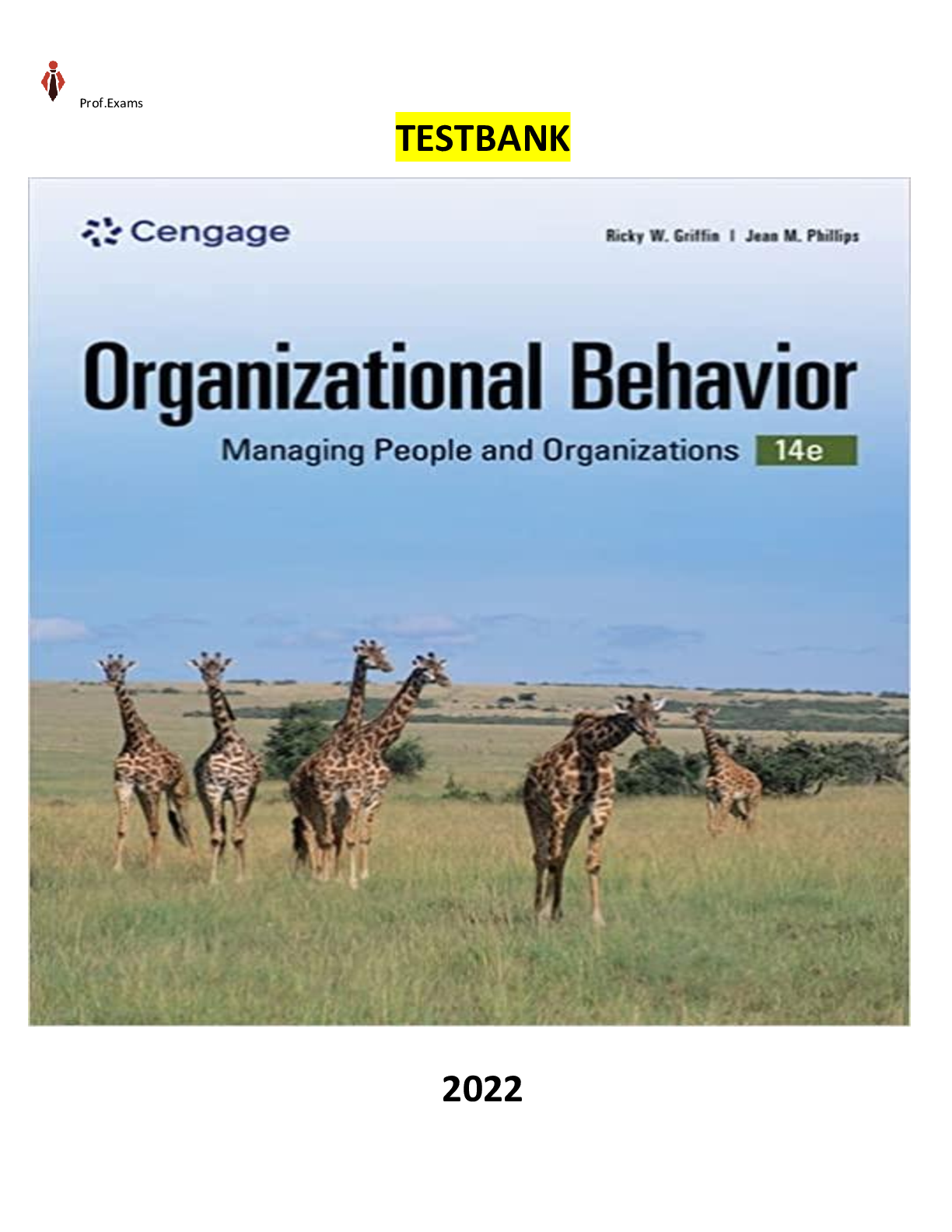
Reviews( 0 )
Document information
Connected school, study & course
About the document
Uploaded On
Mar 26, 2023
Number of pages
404
Written in
Additional information
This document has been written for:
Uploaded
Mar 26, 2023
Downloads
0
Views
74

